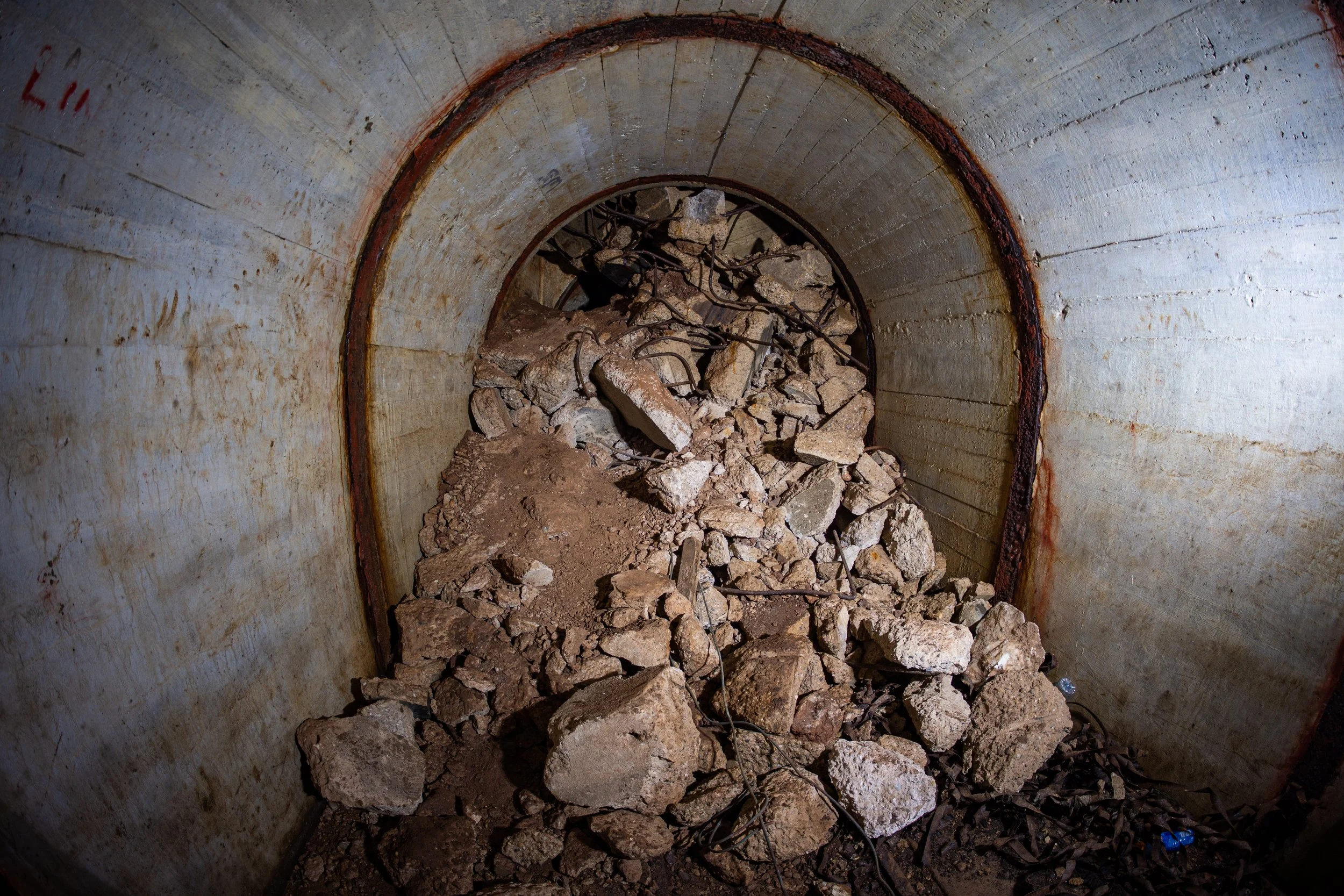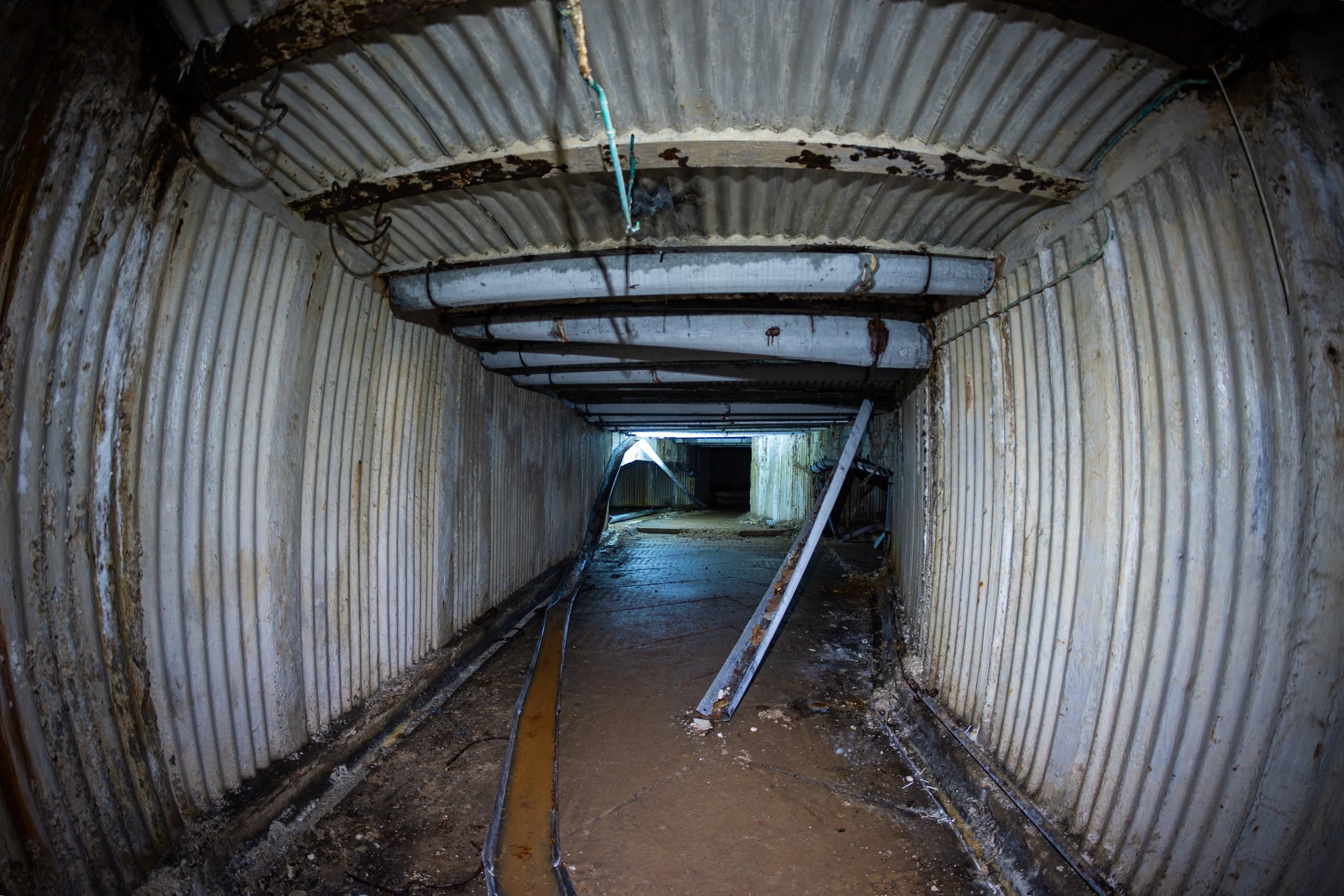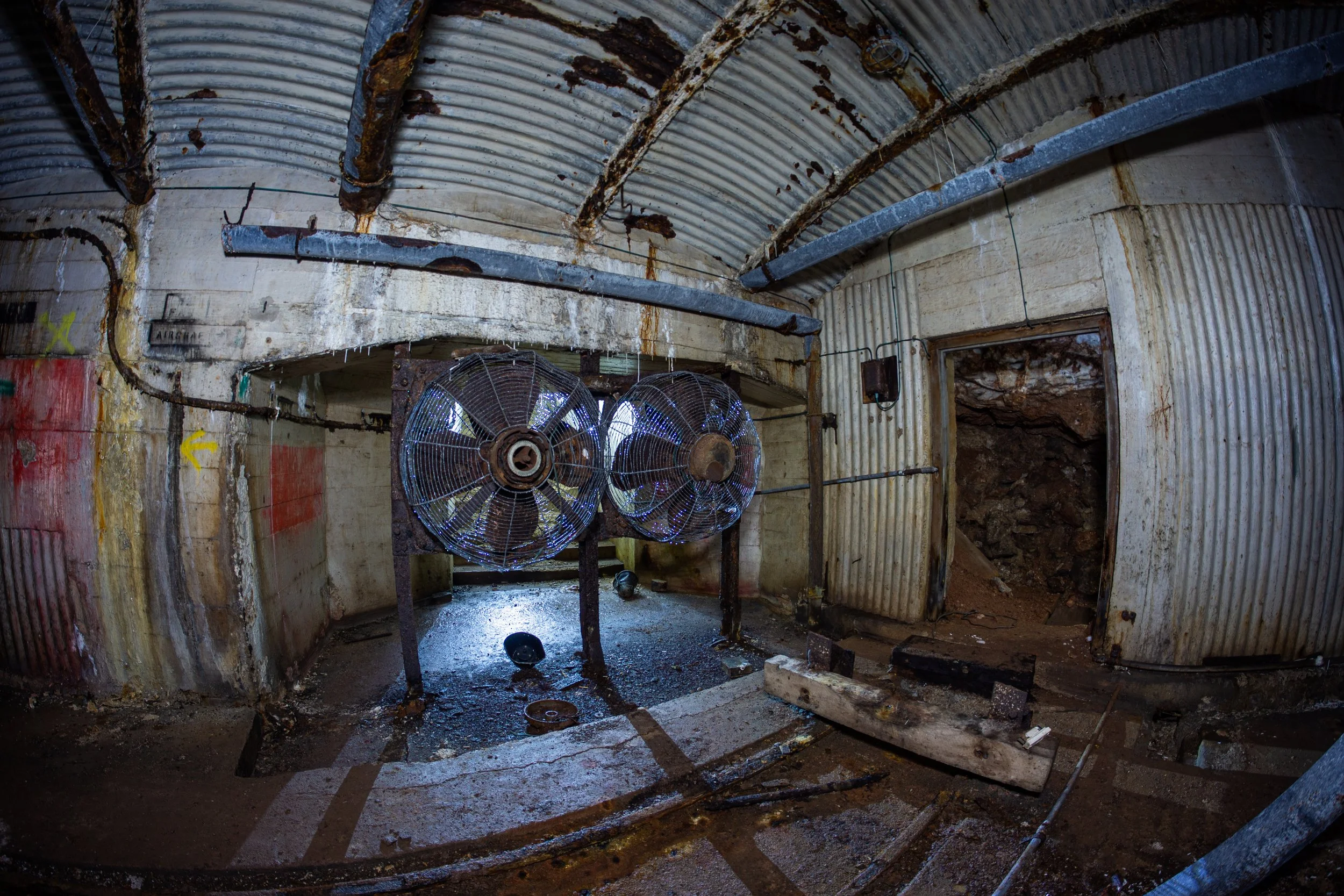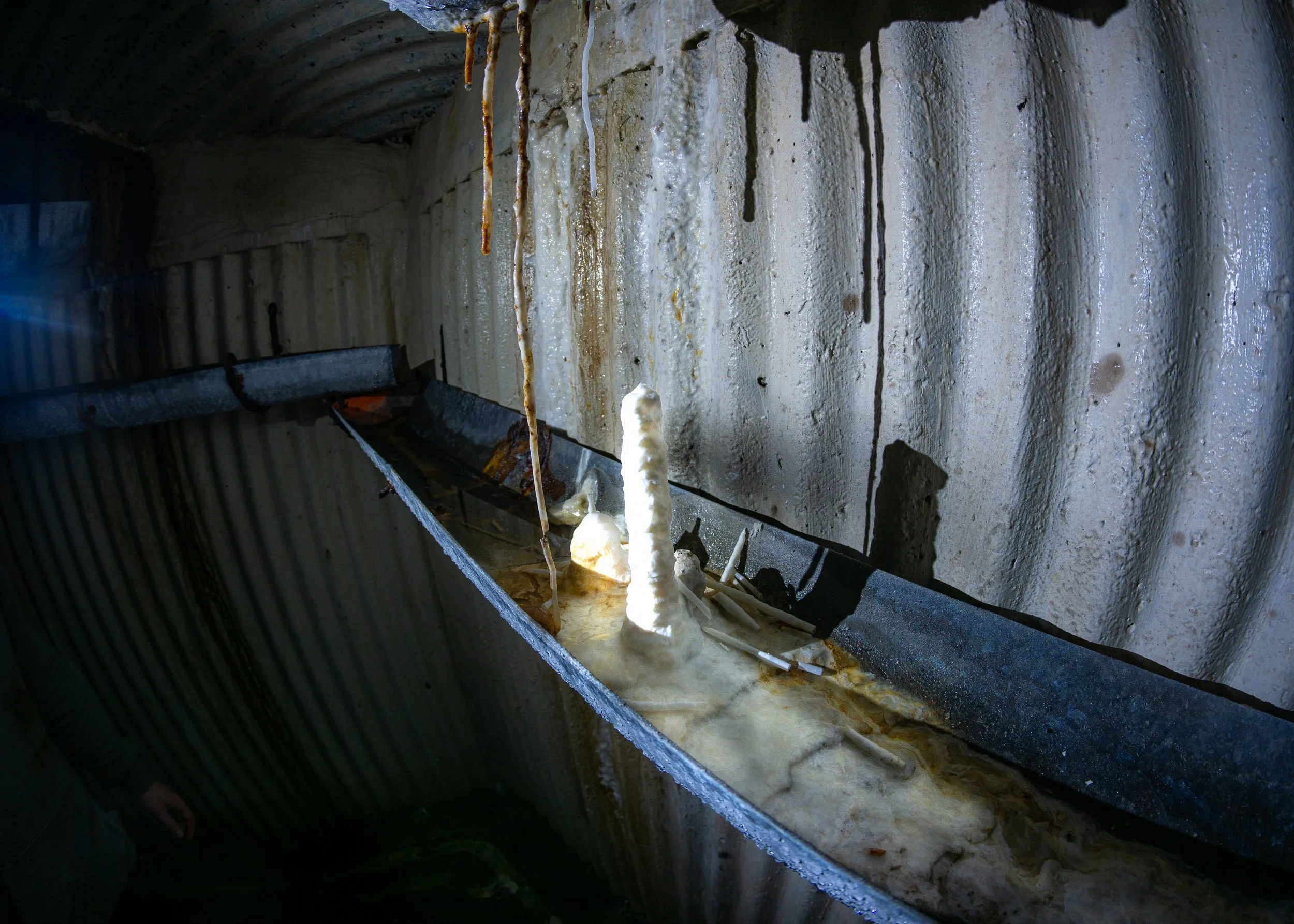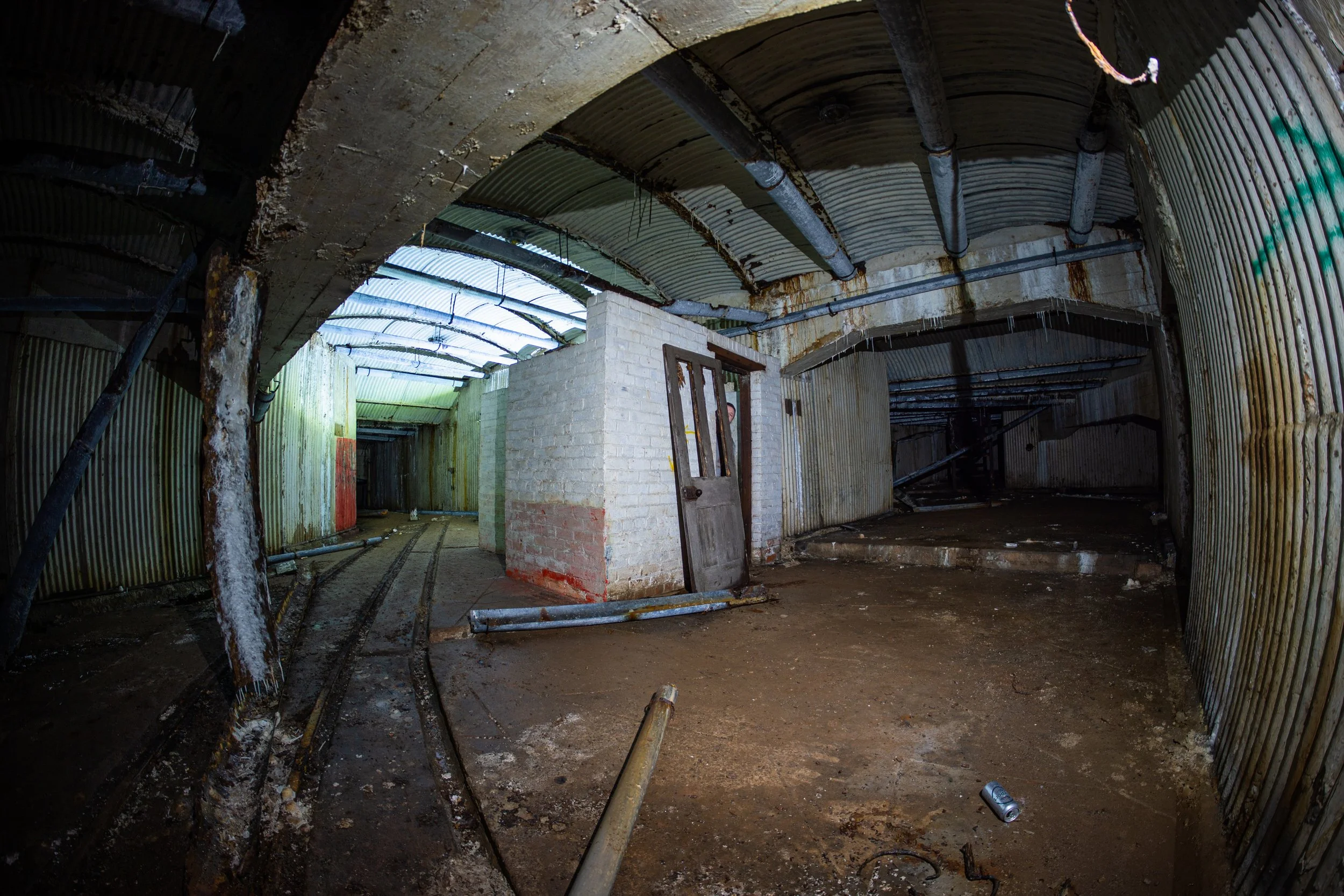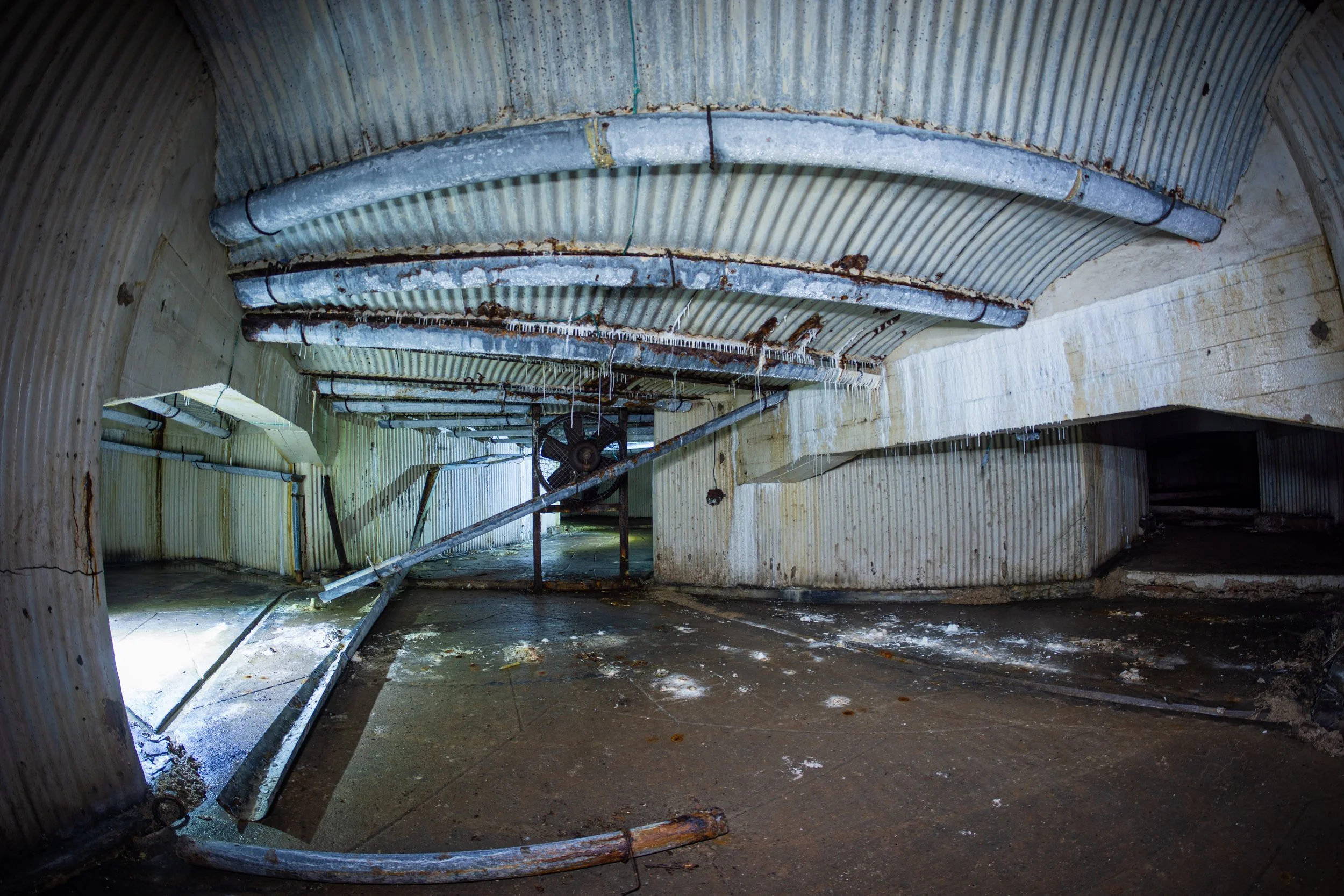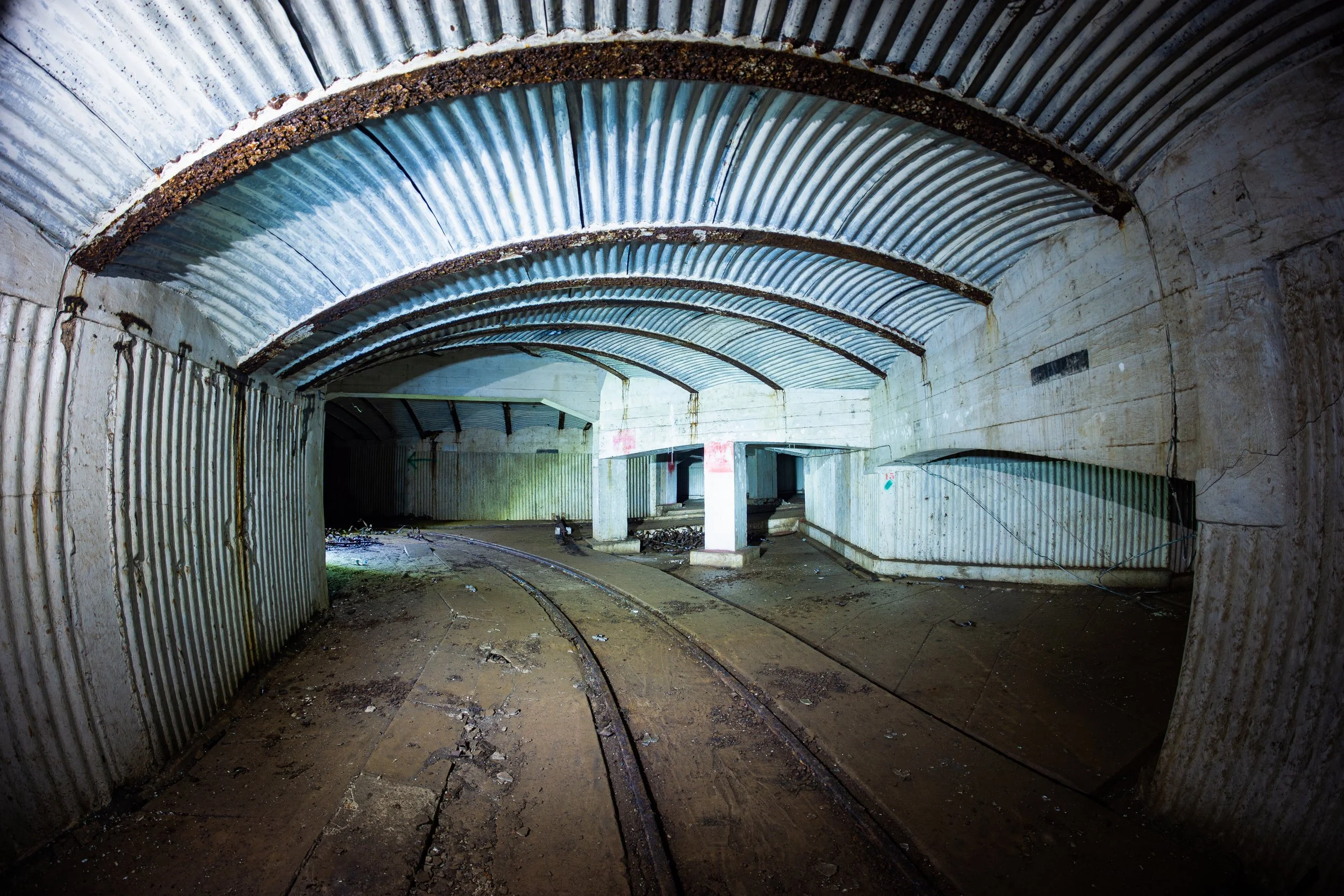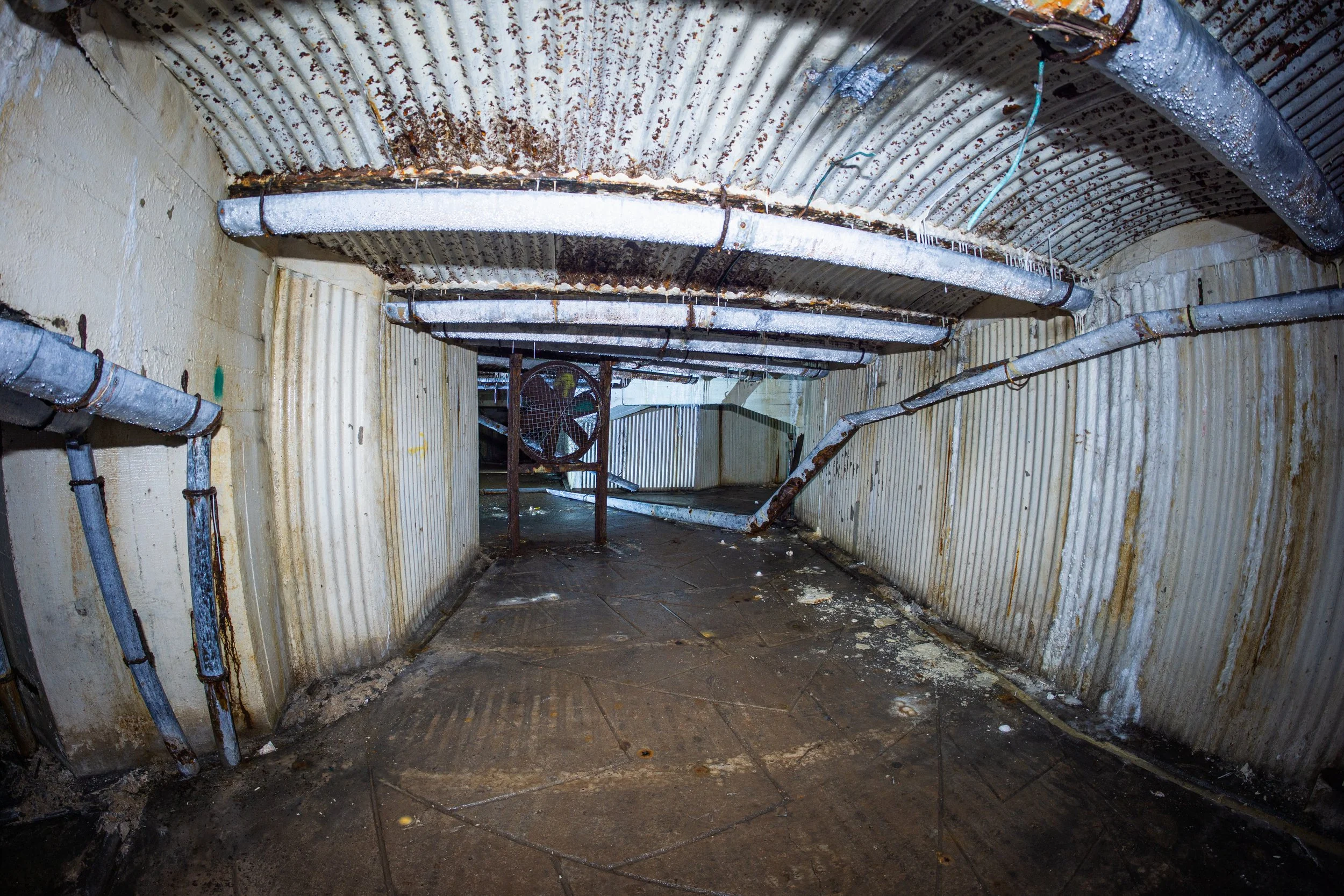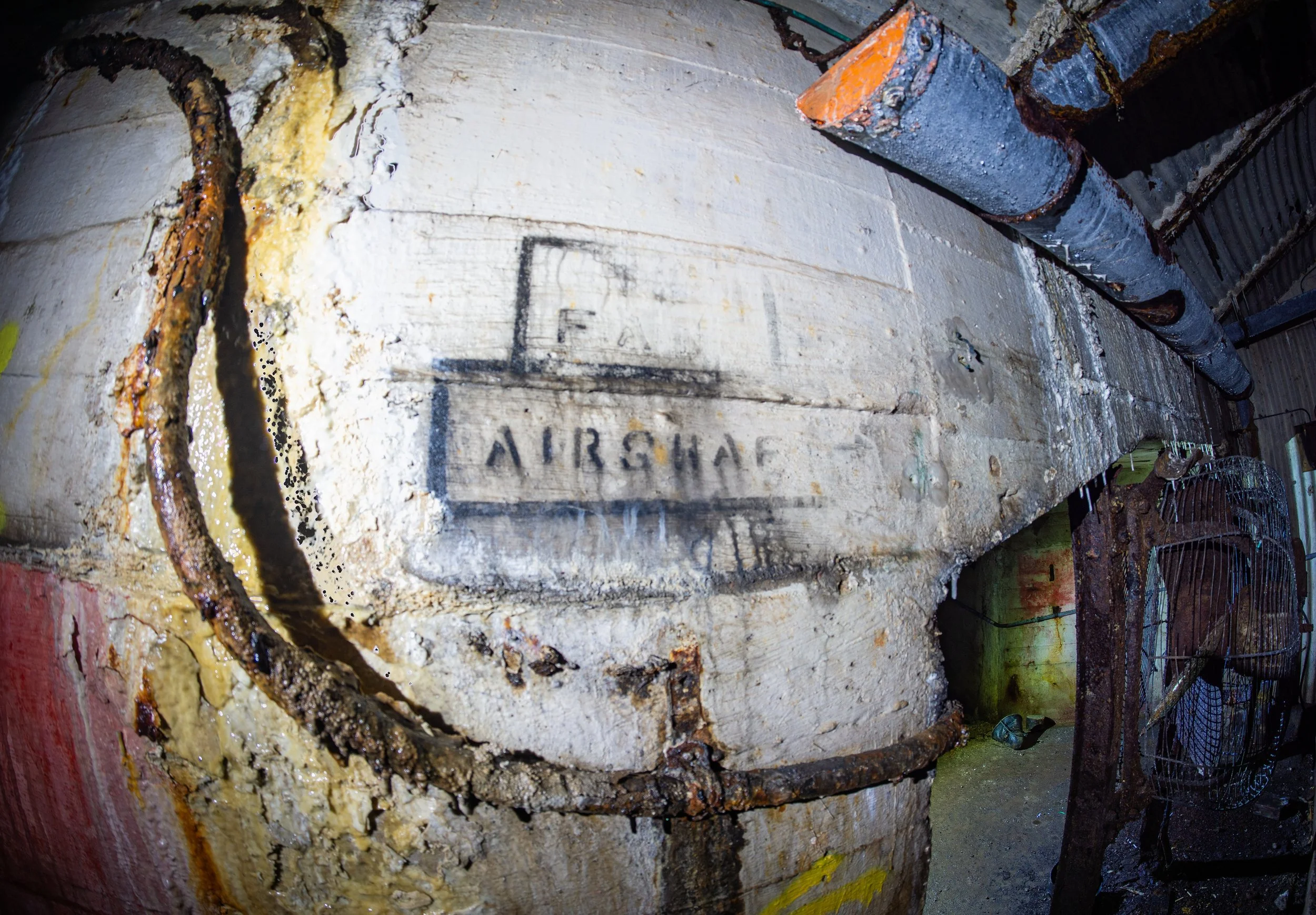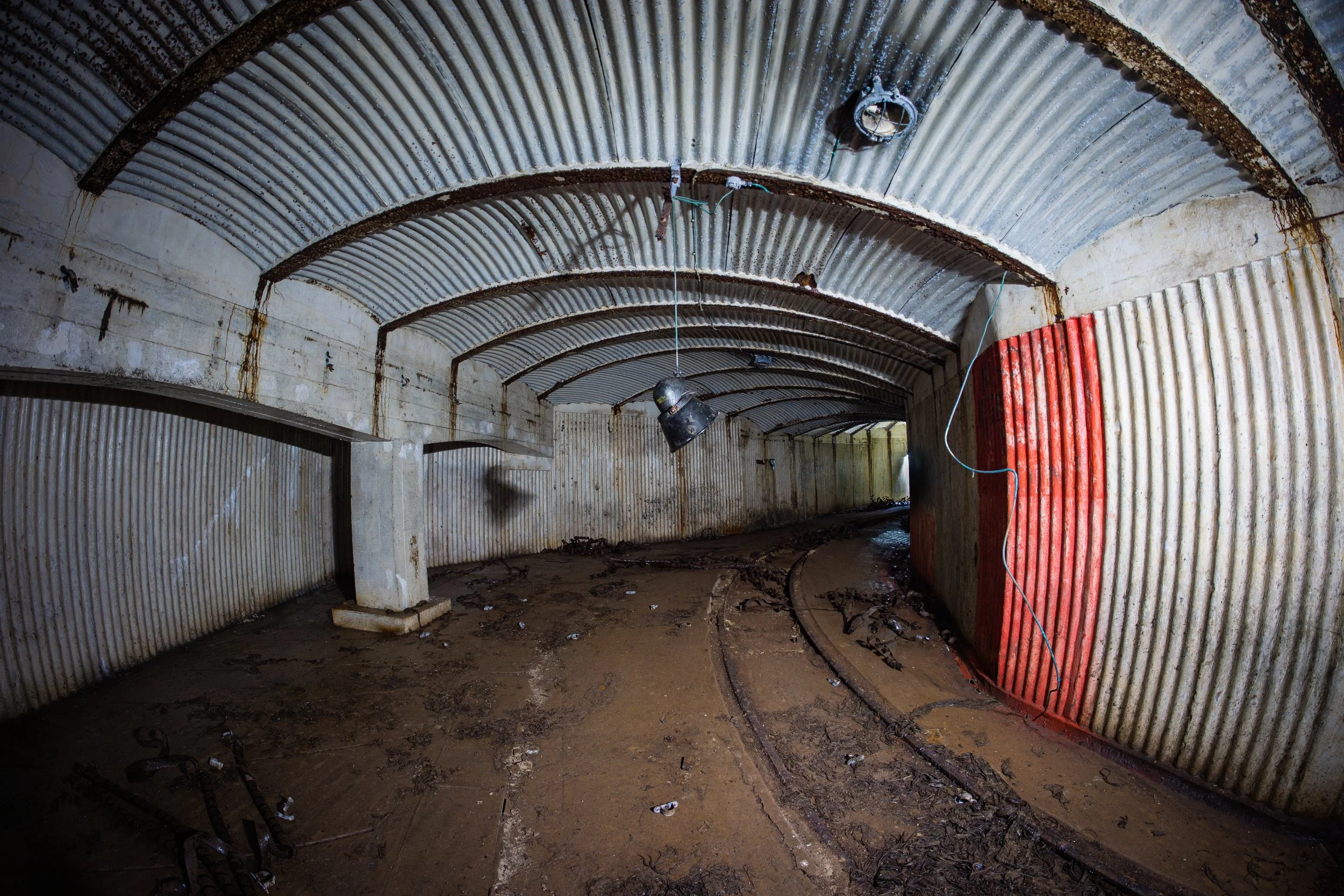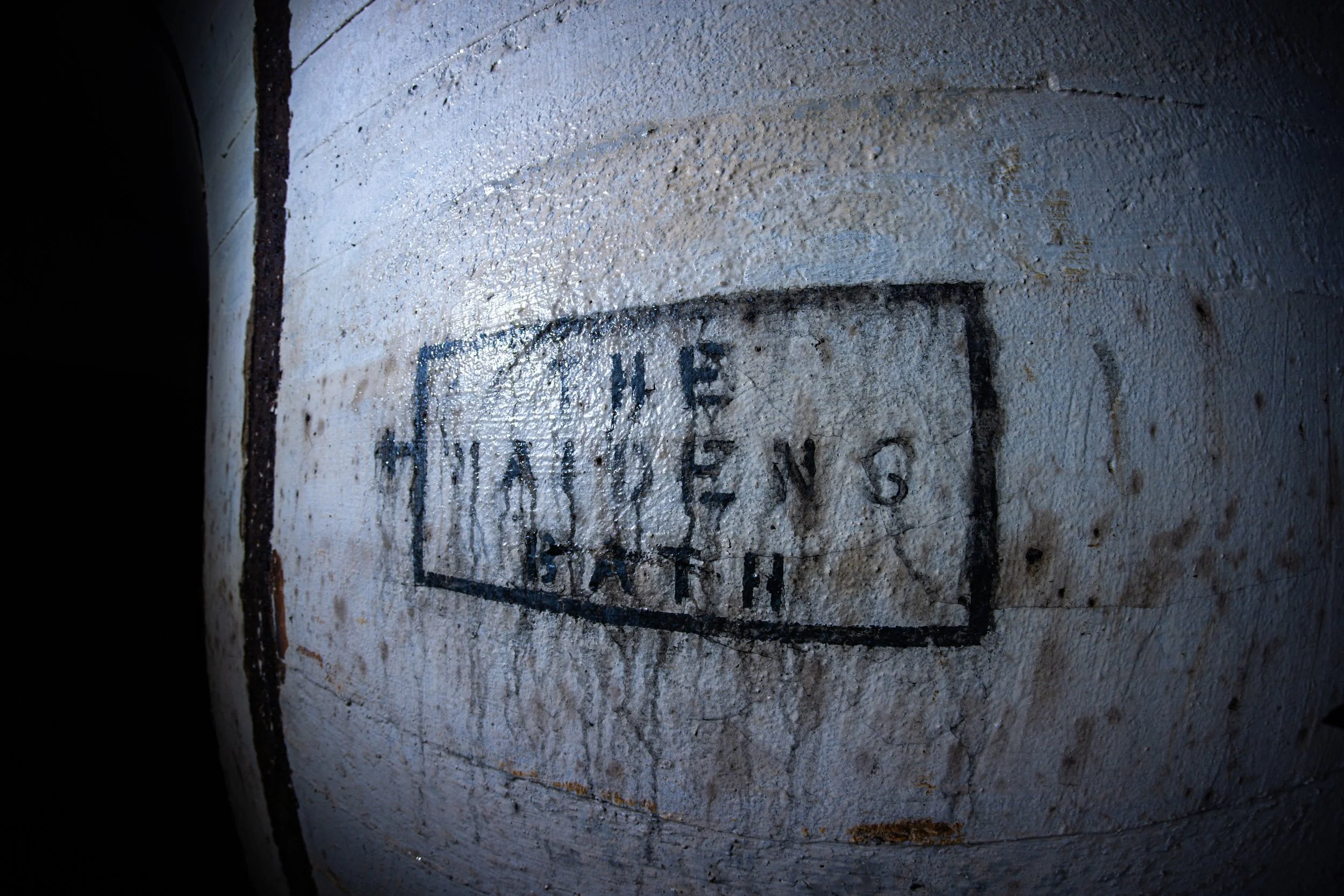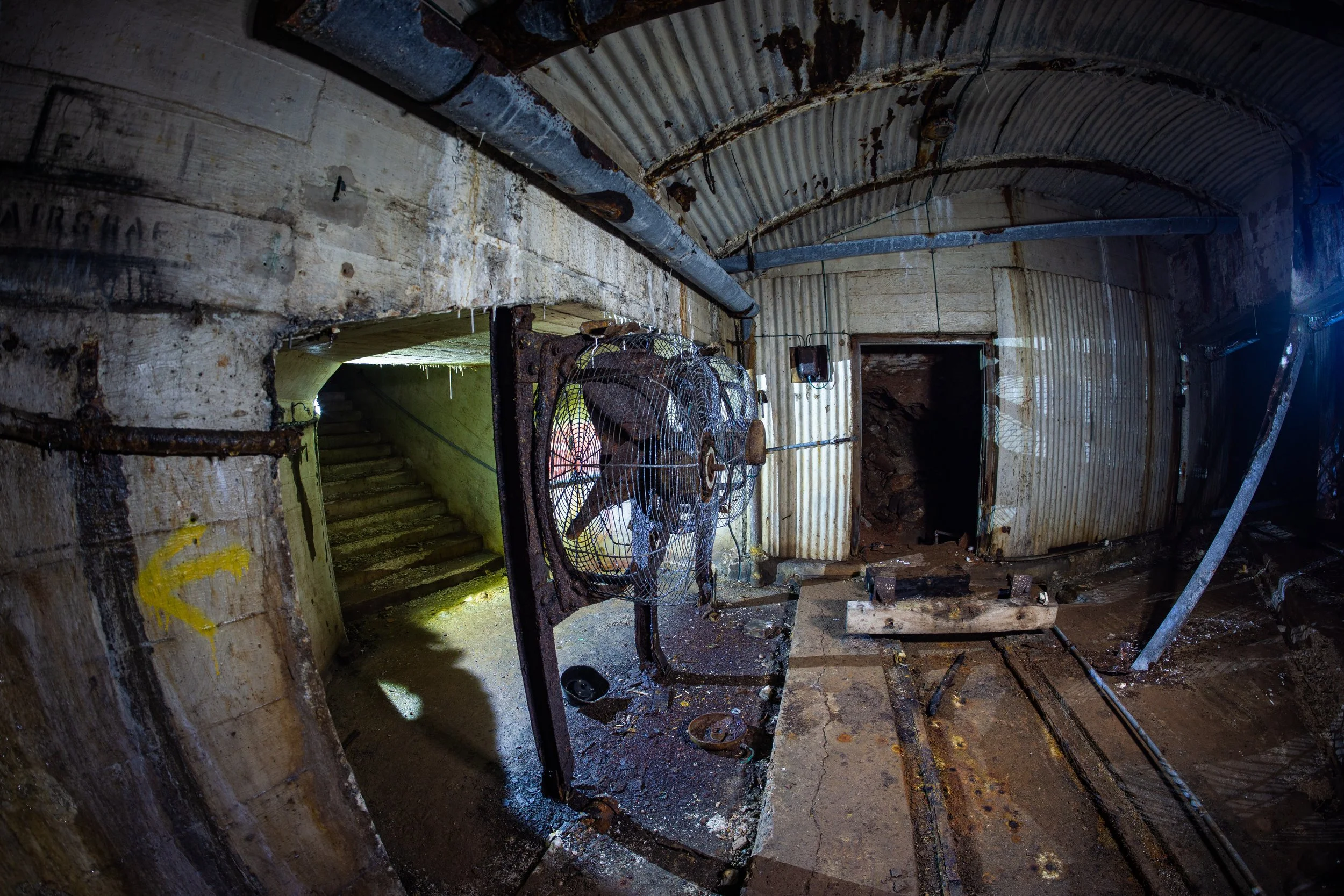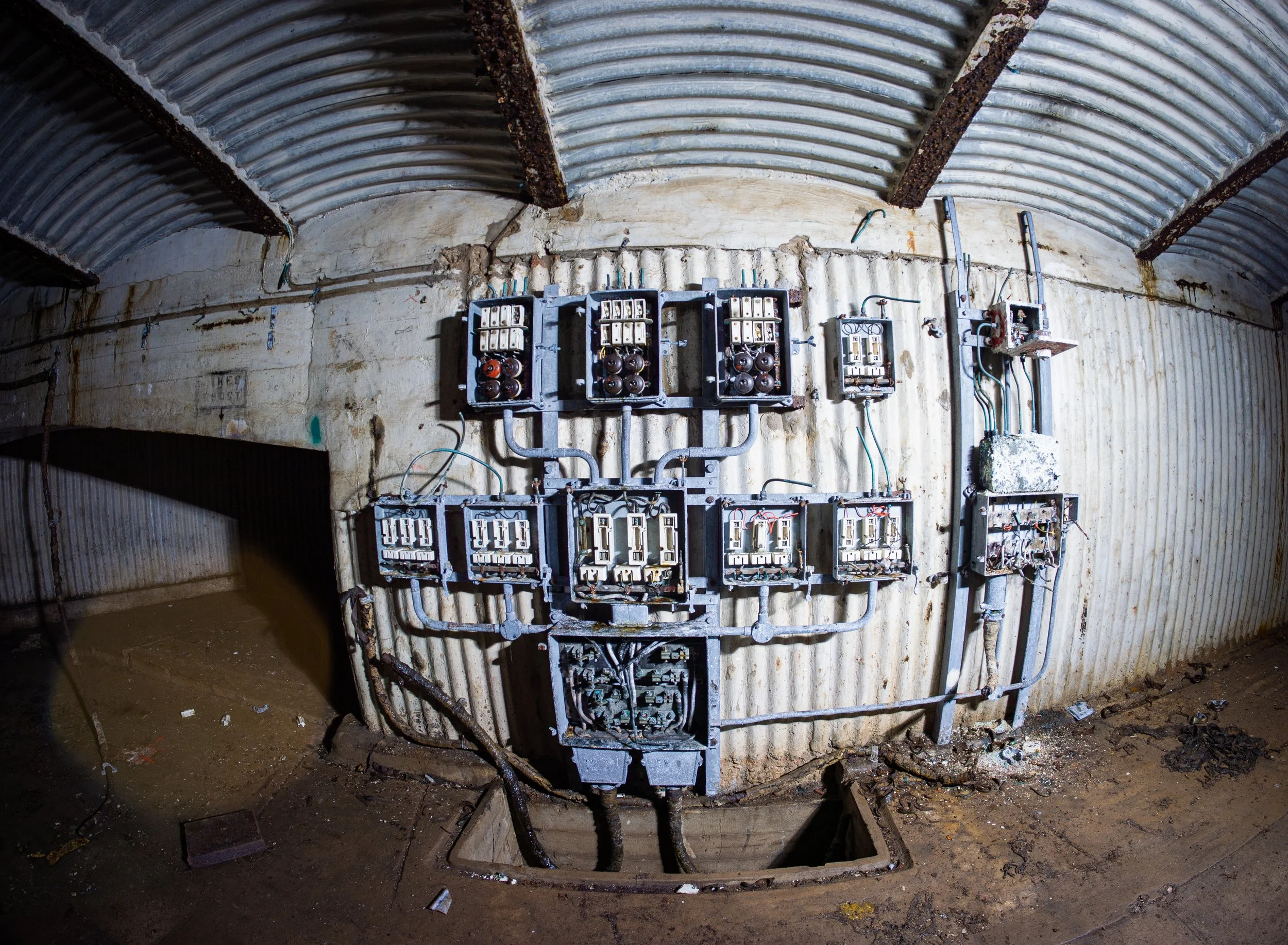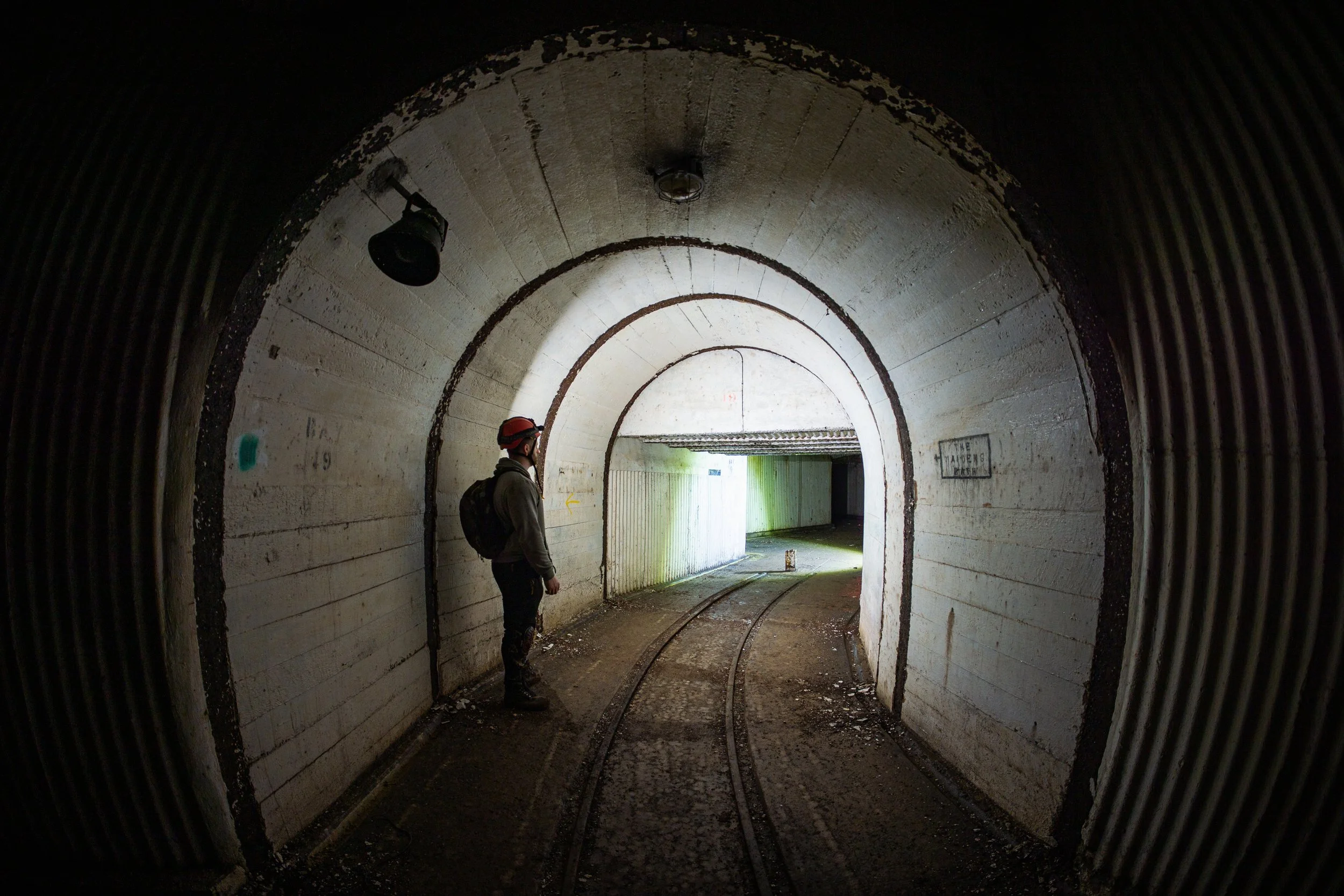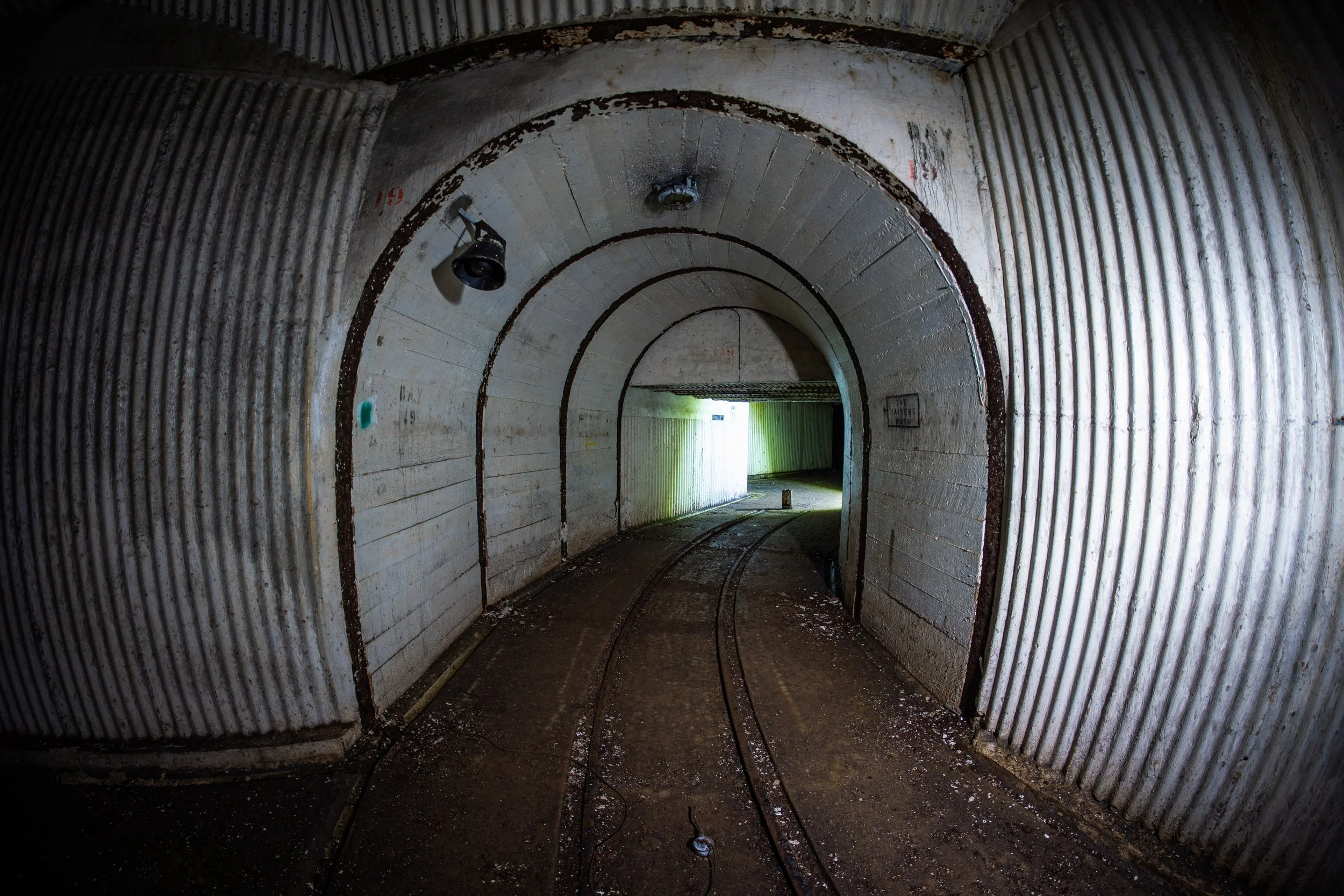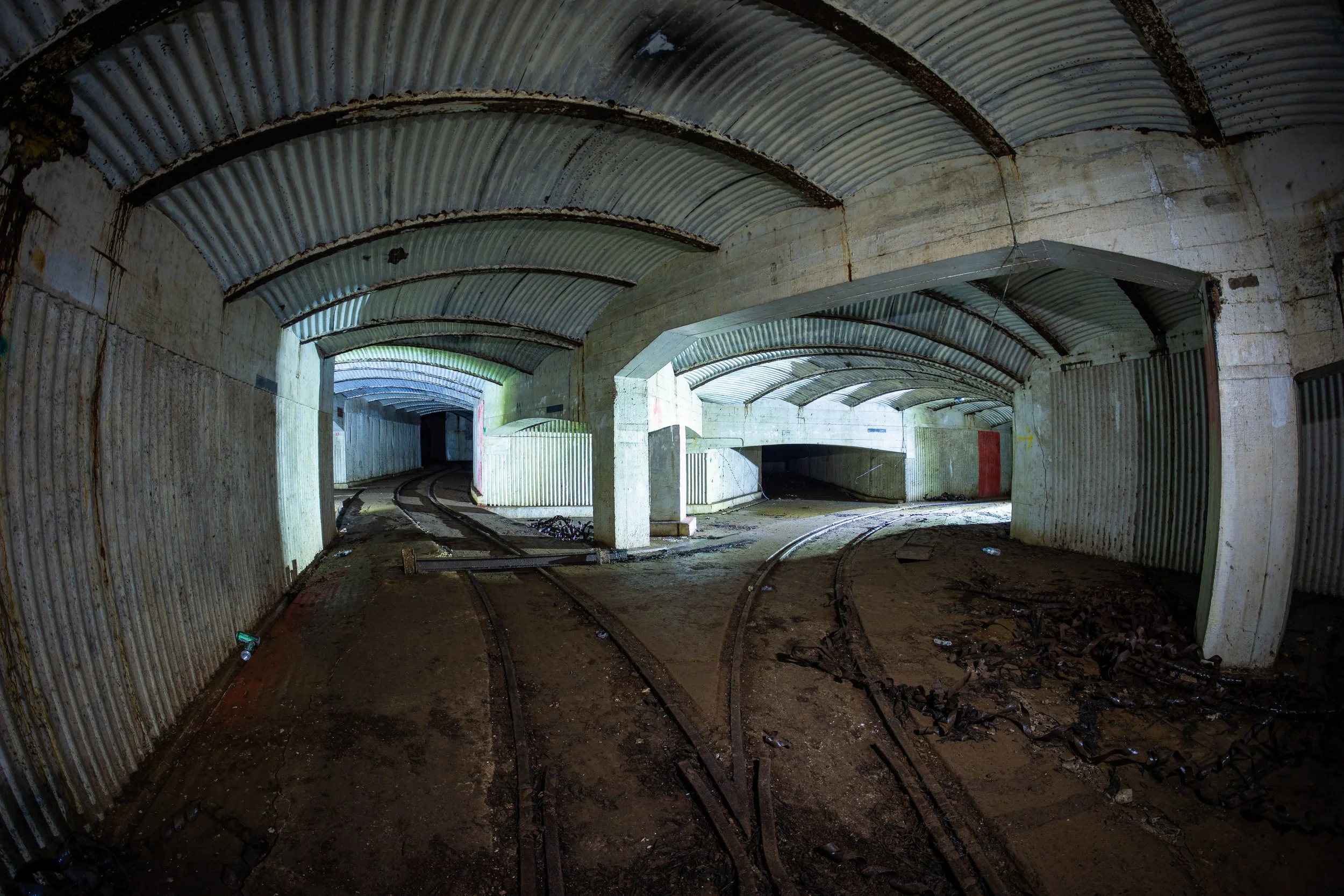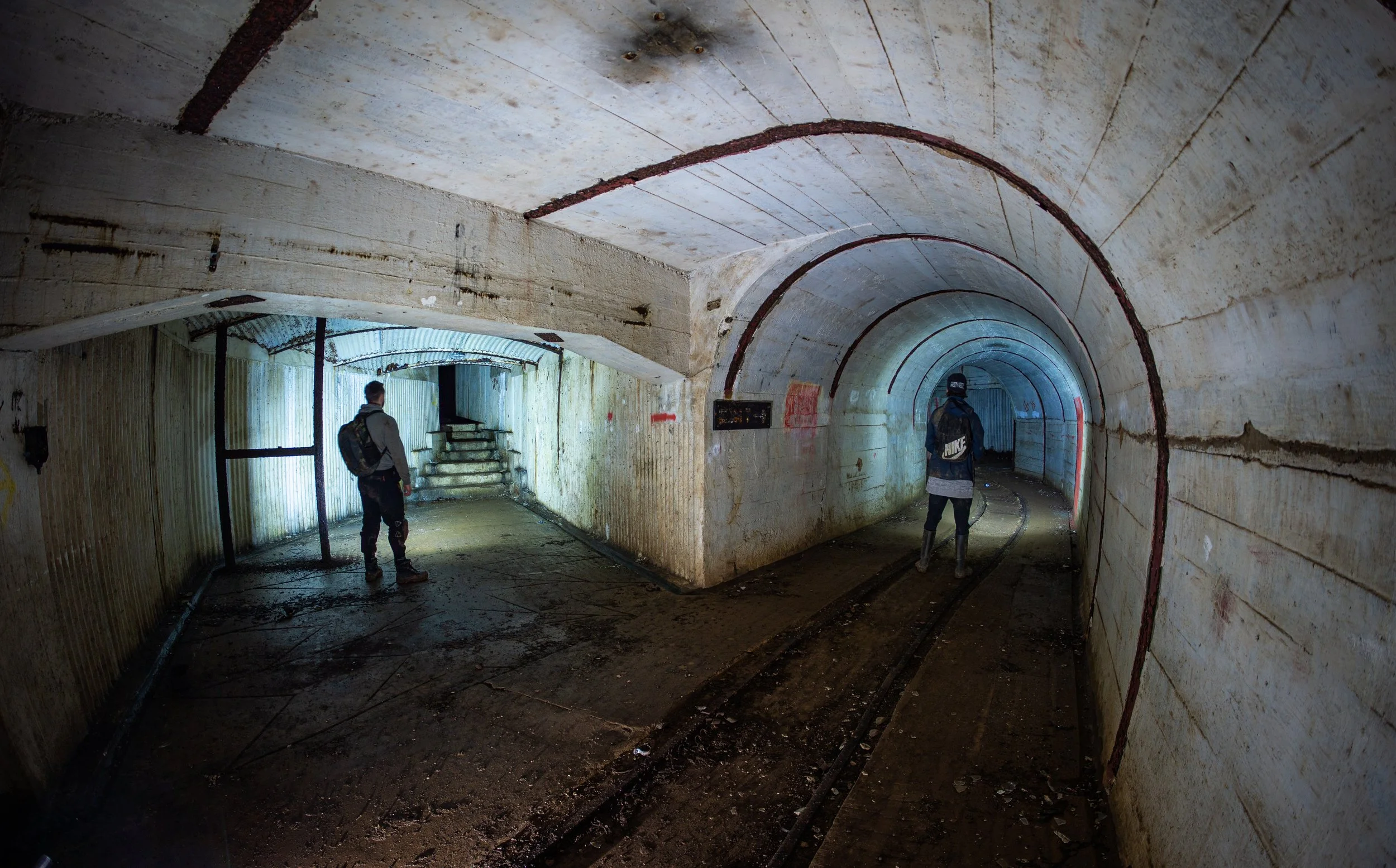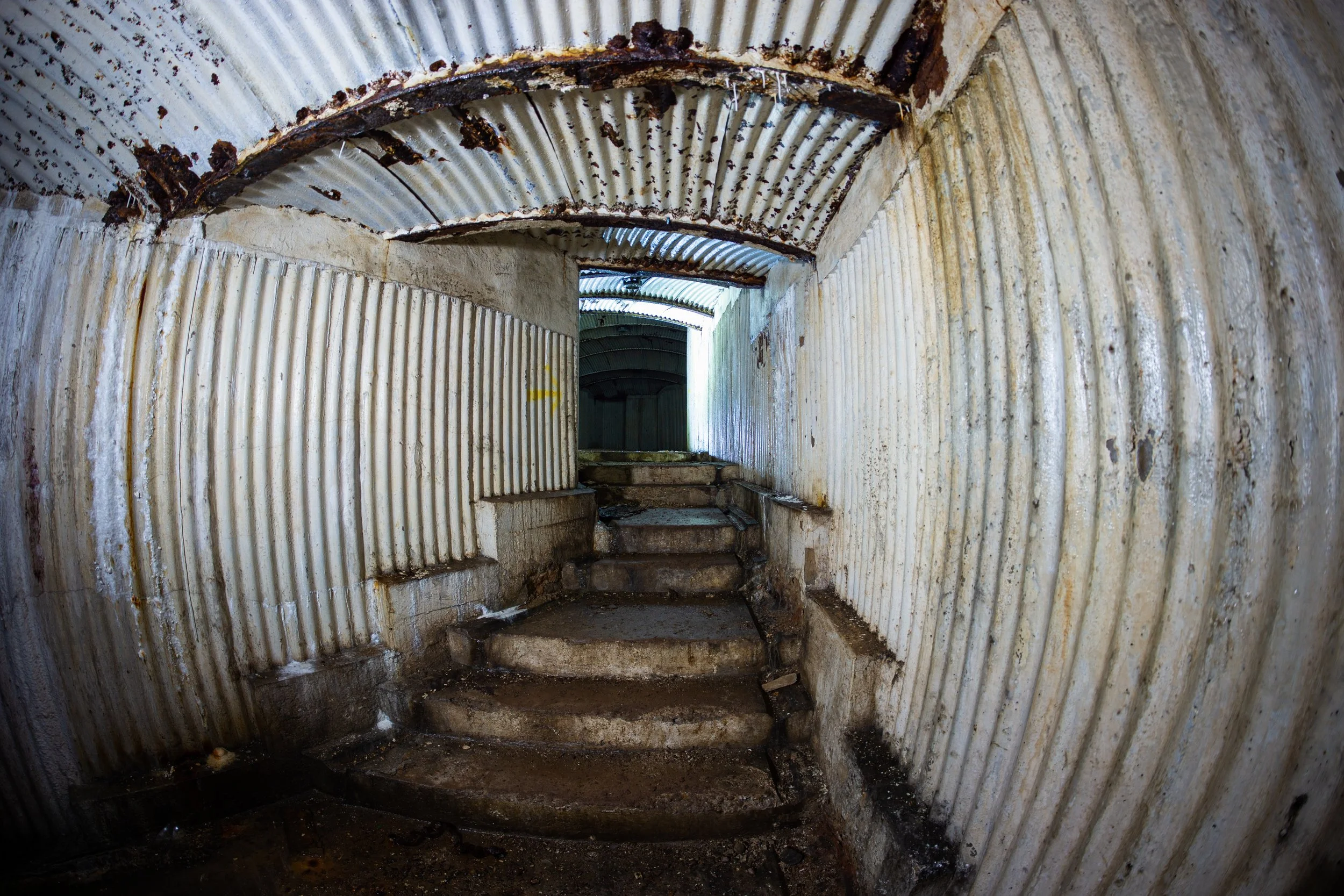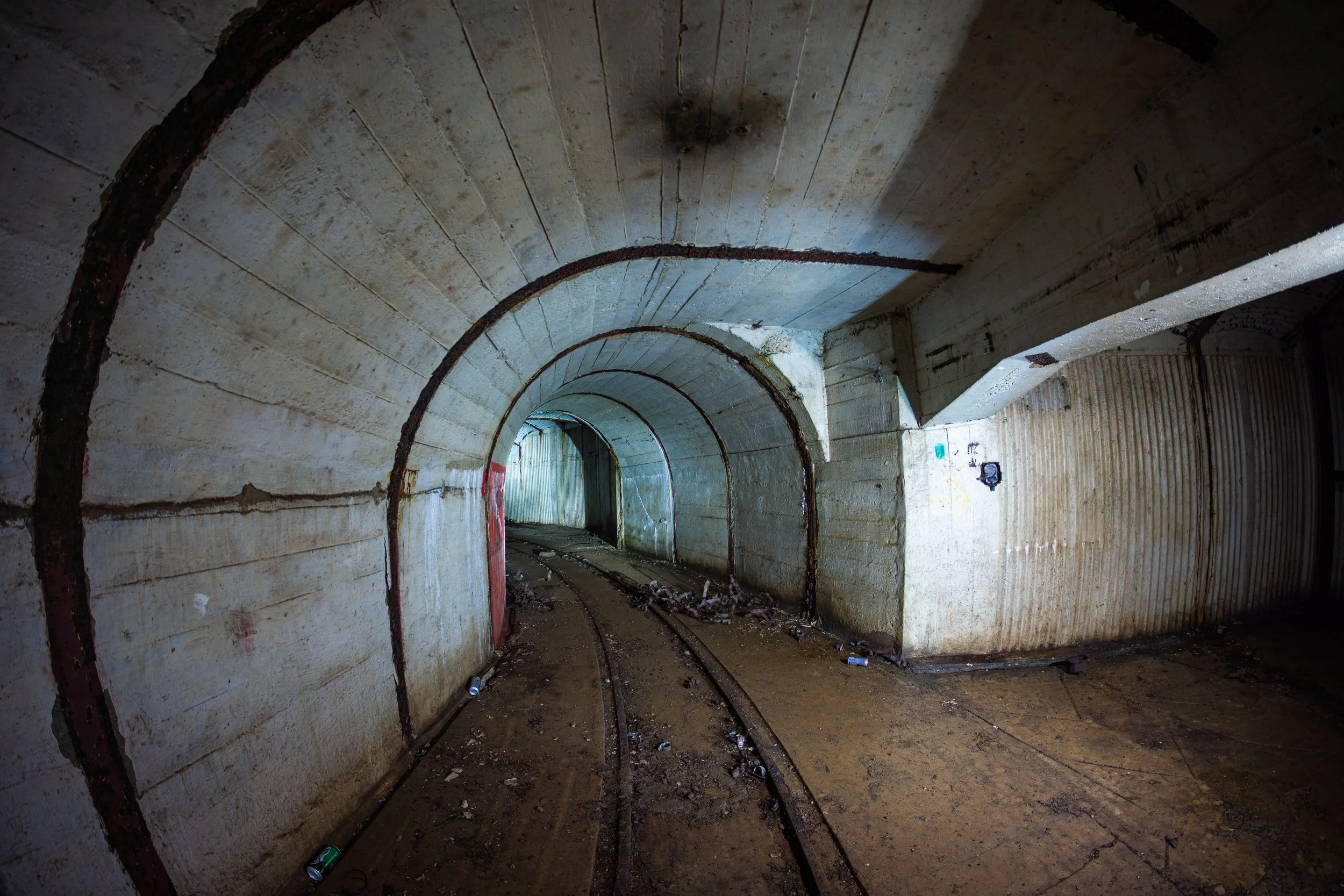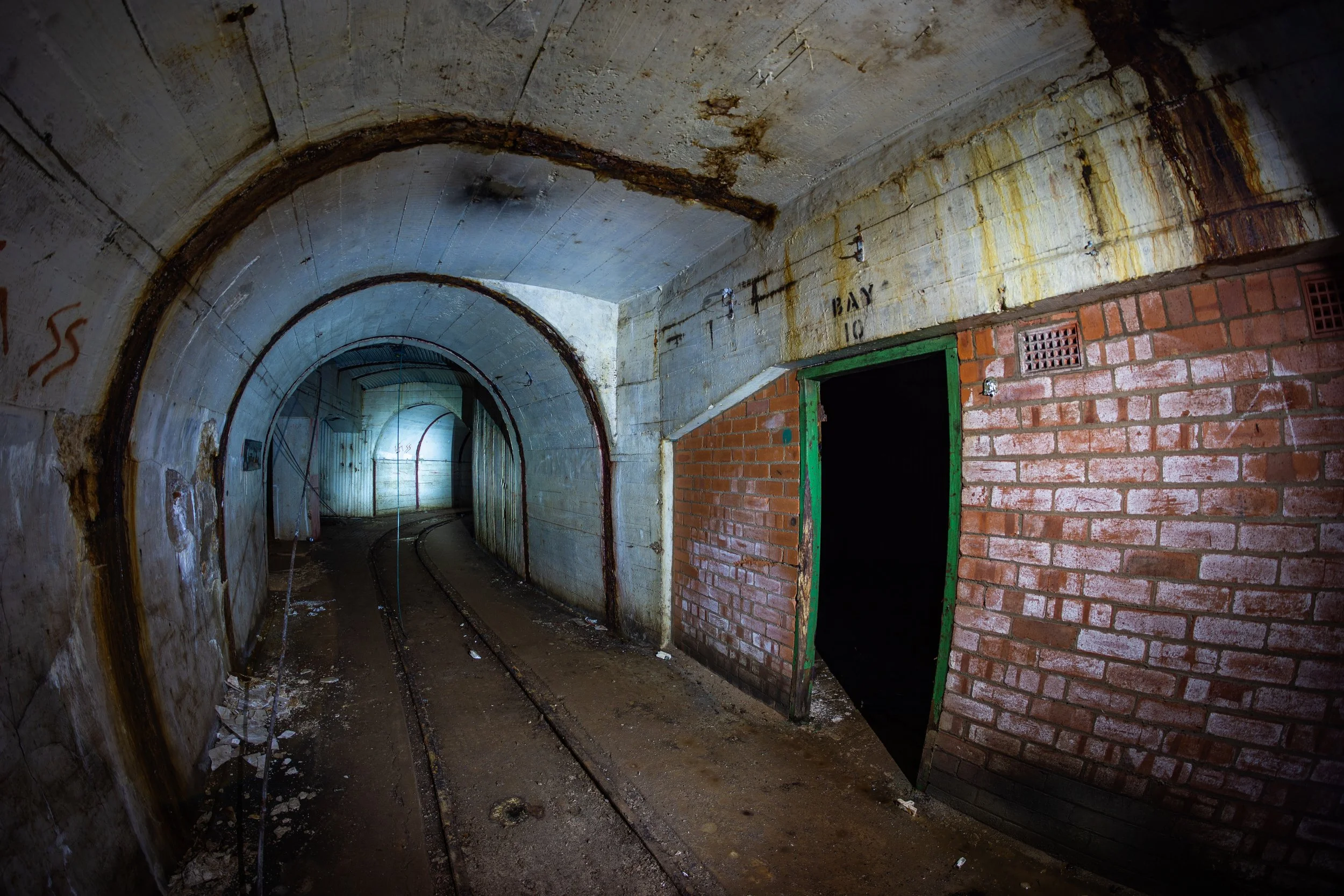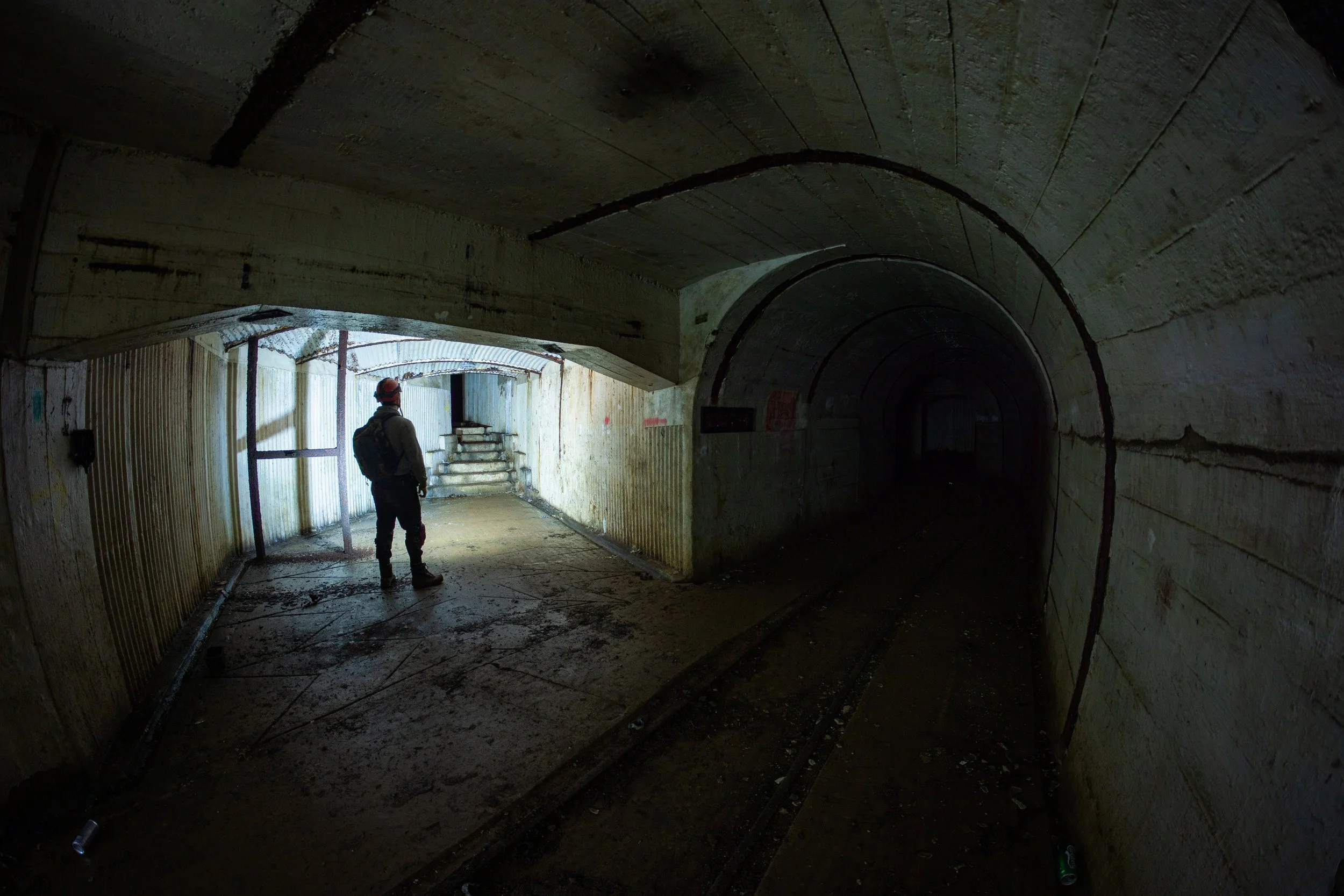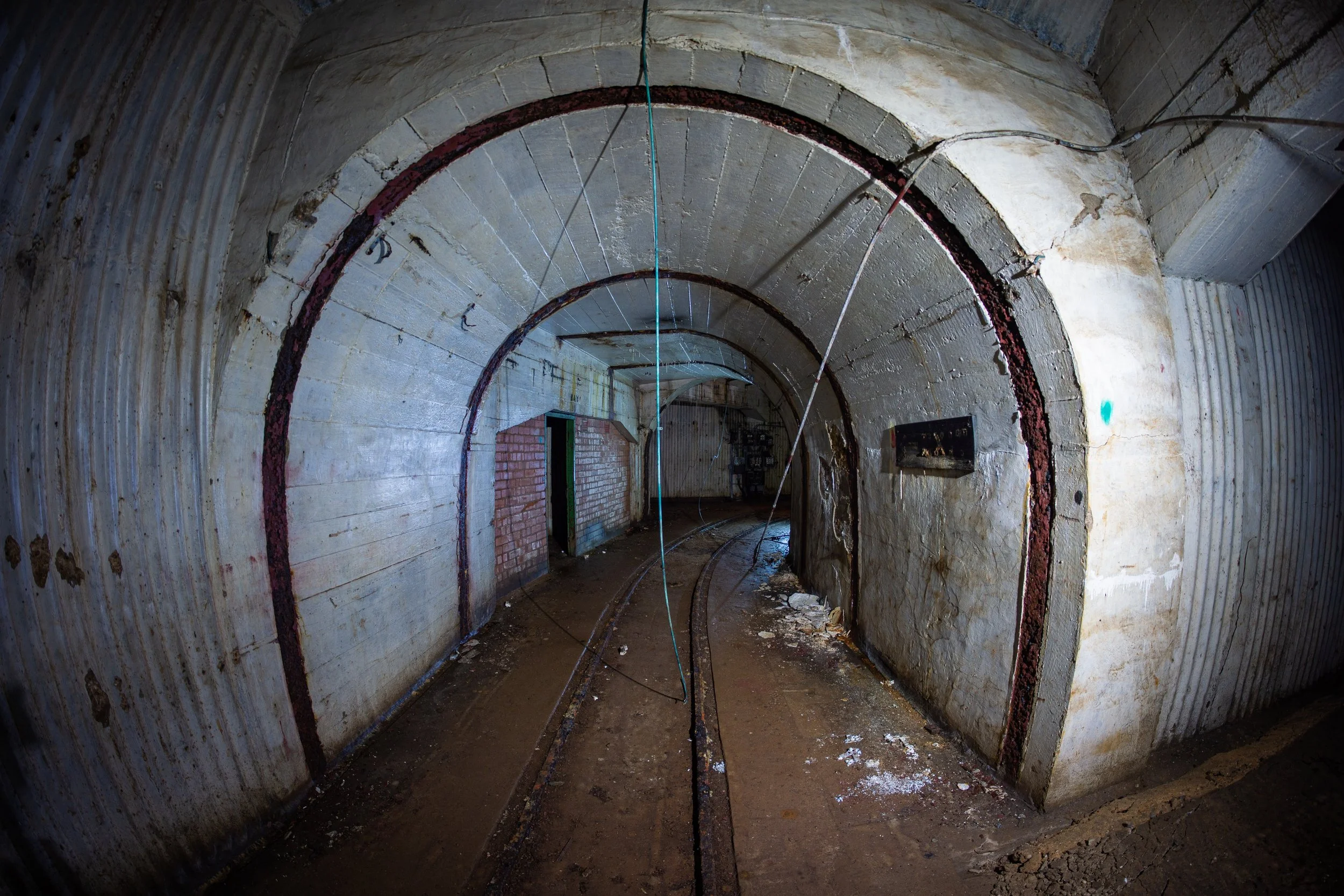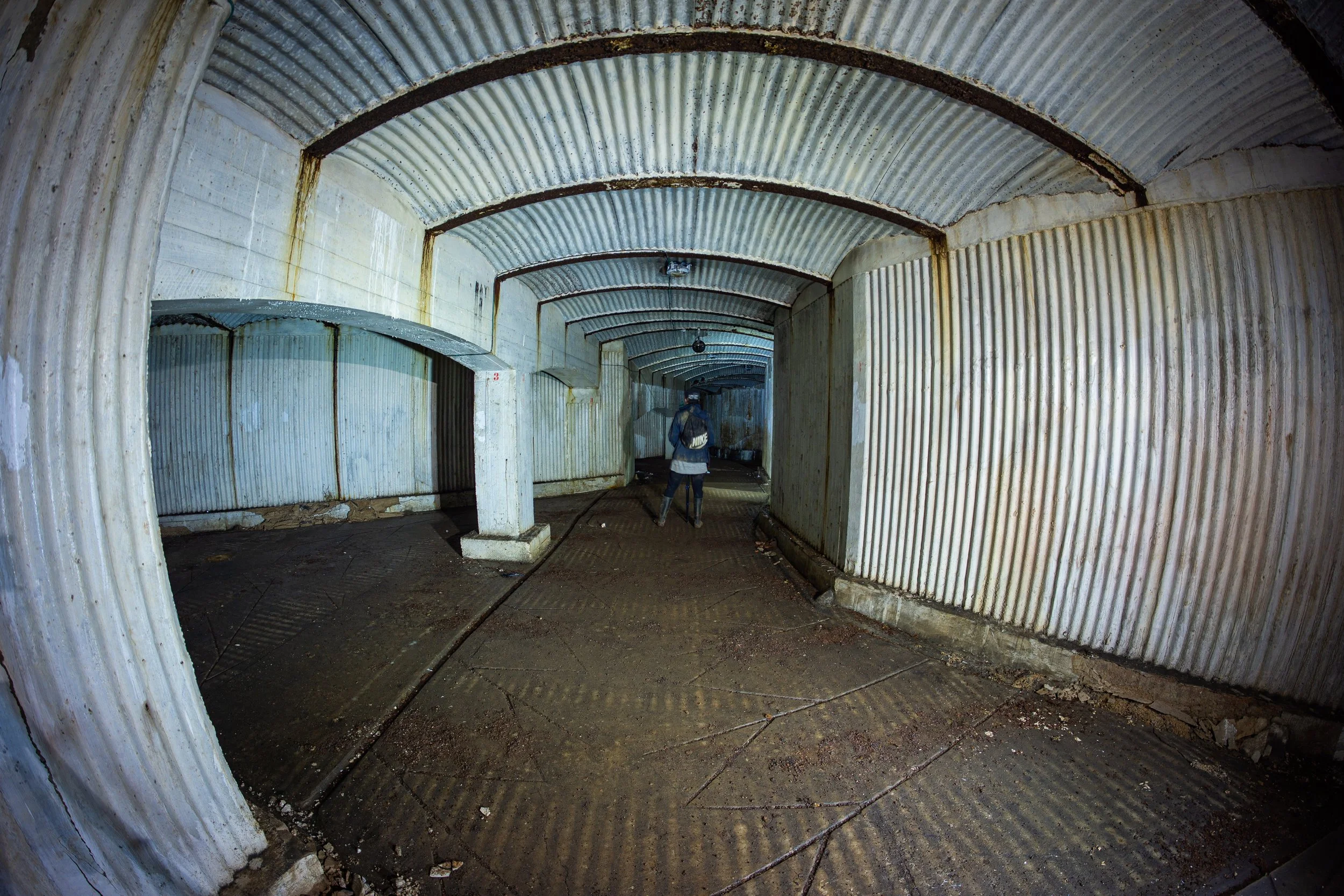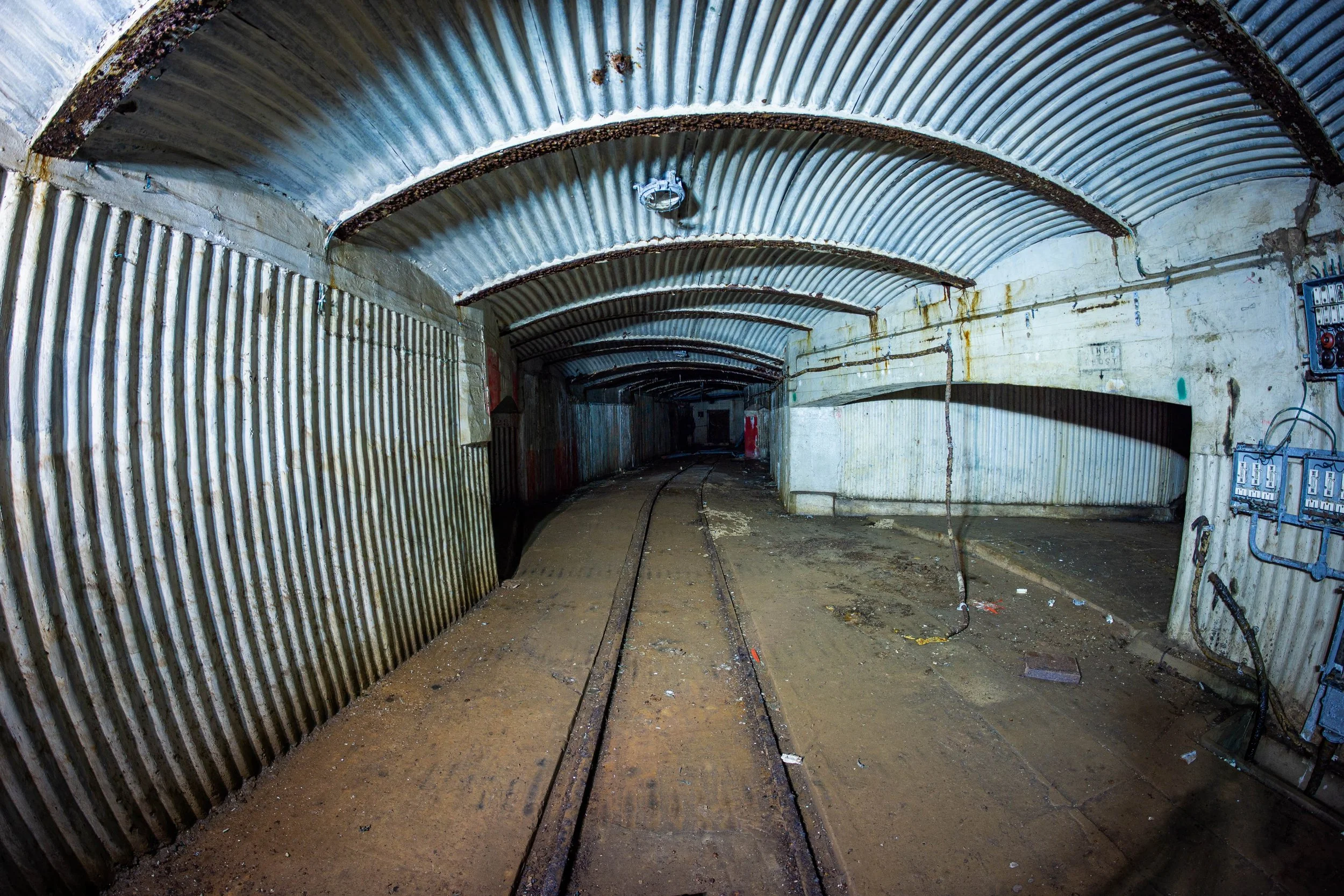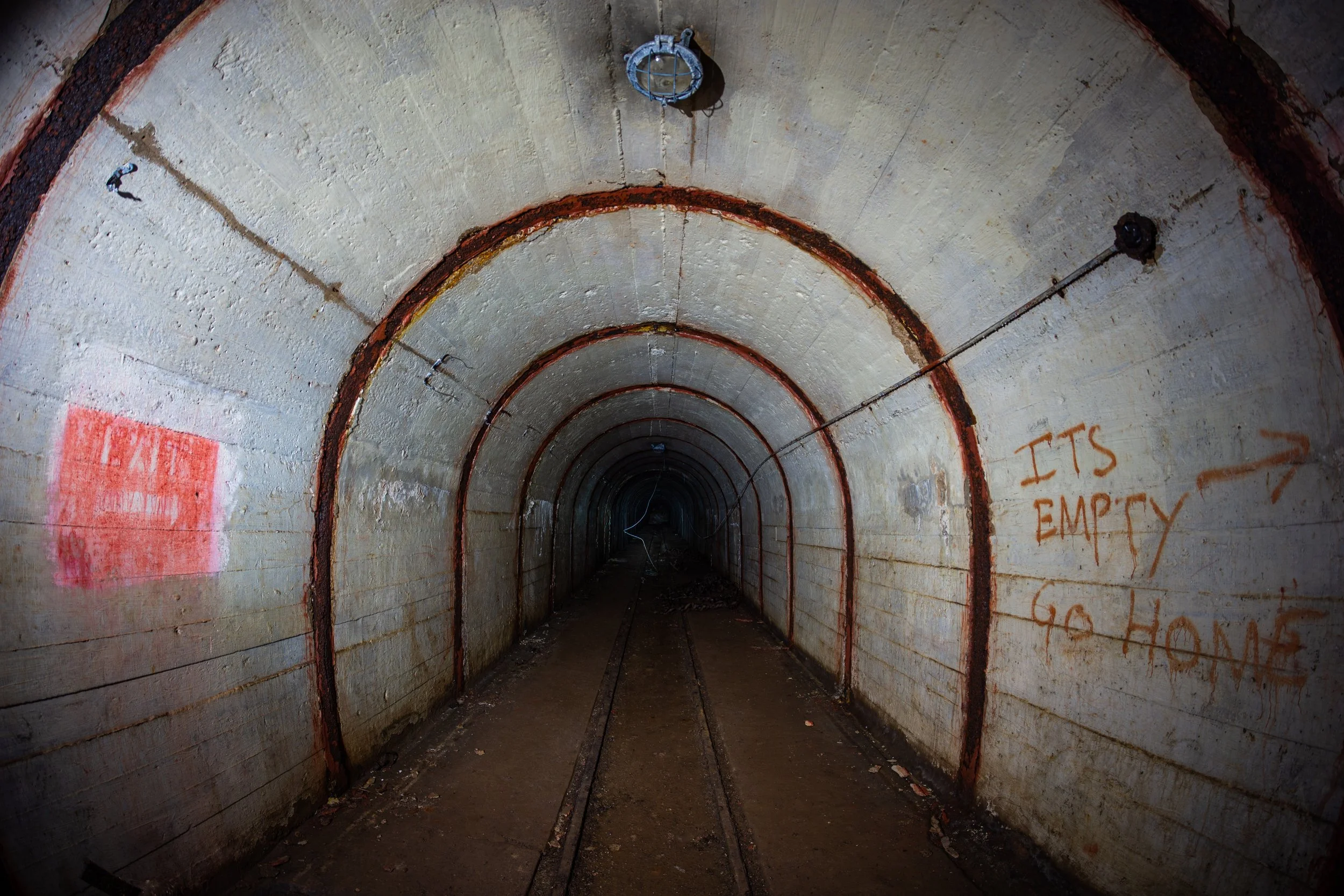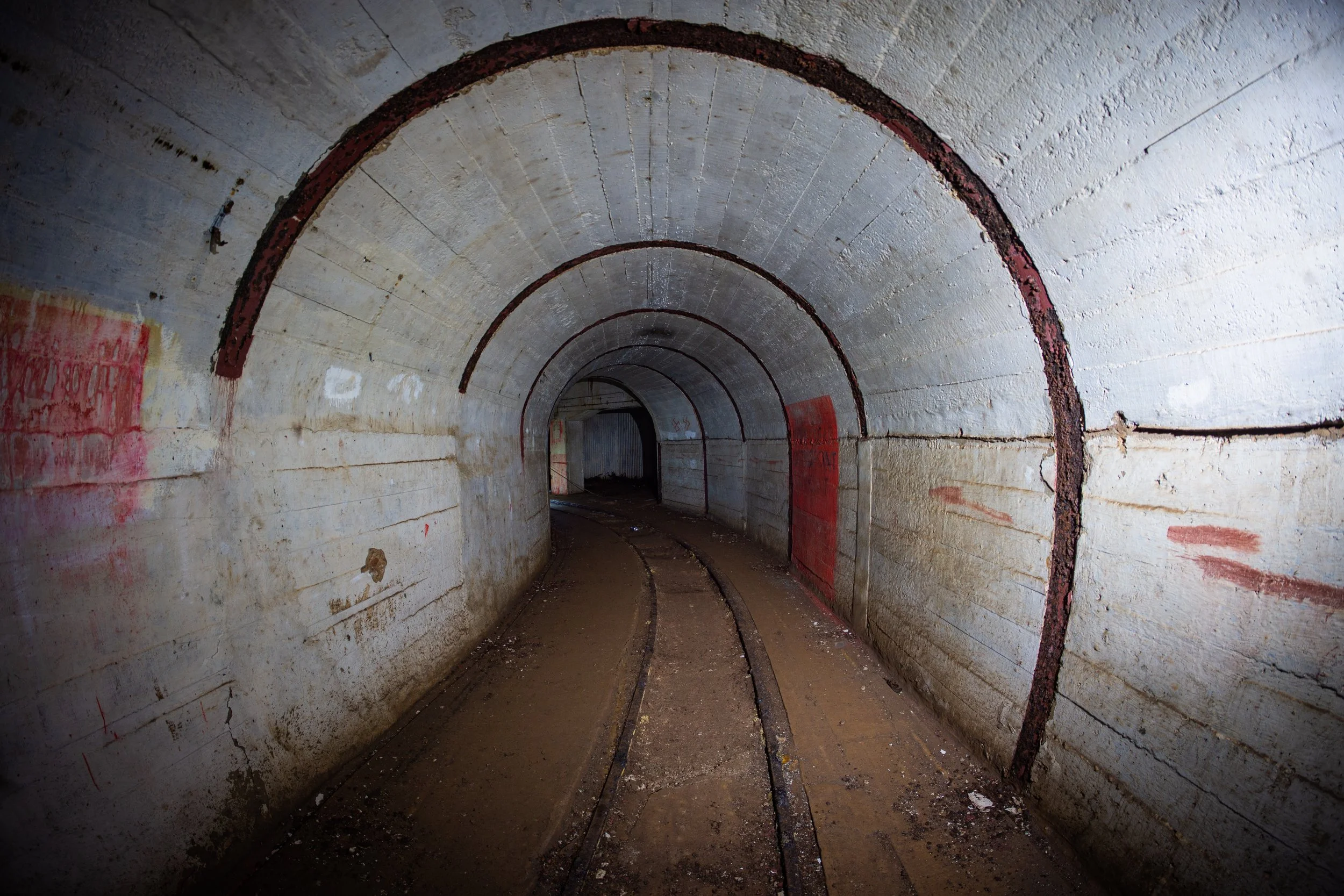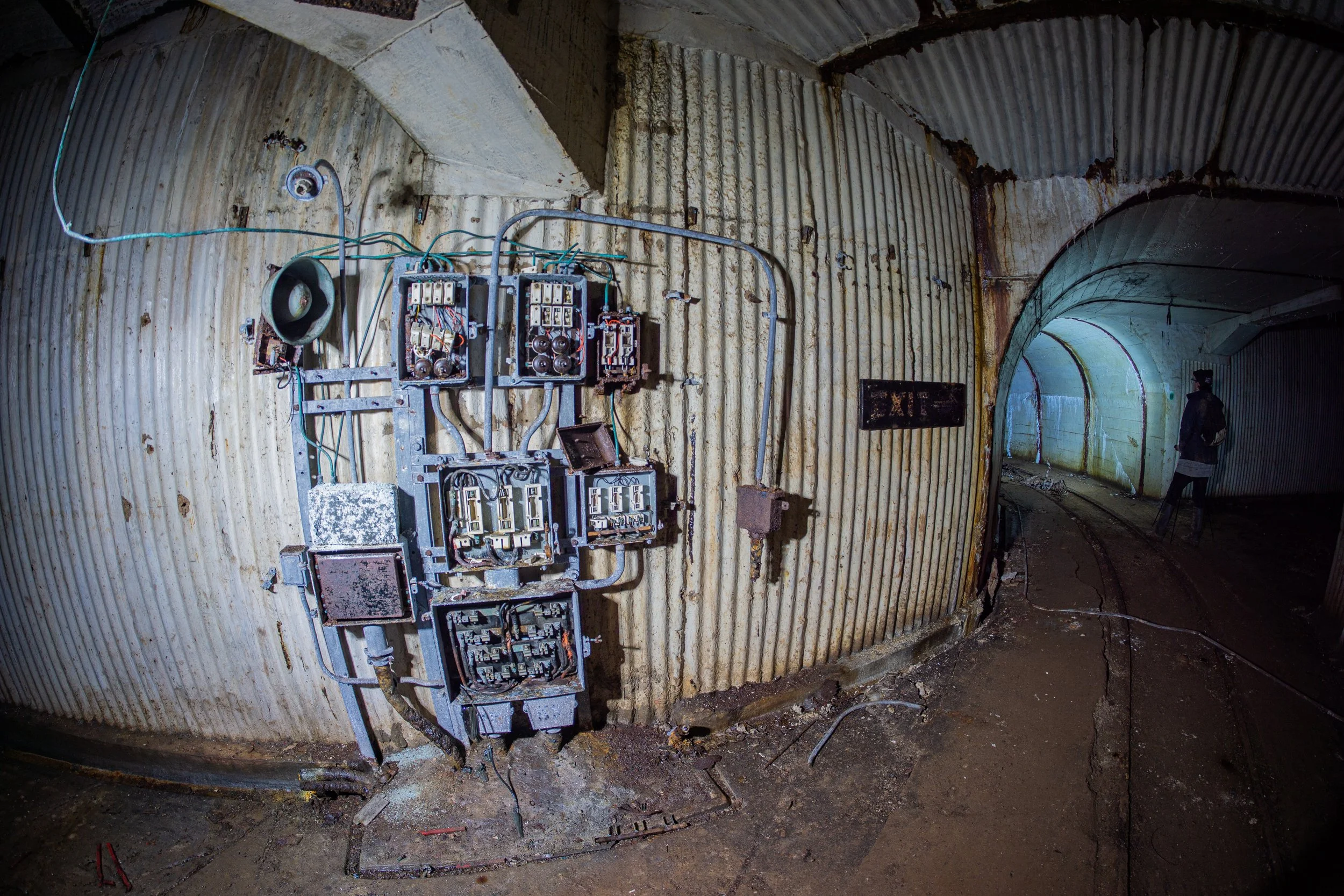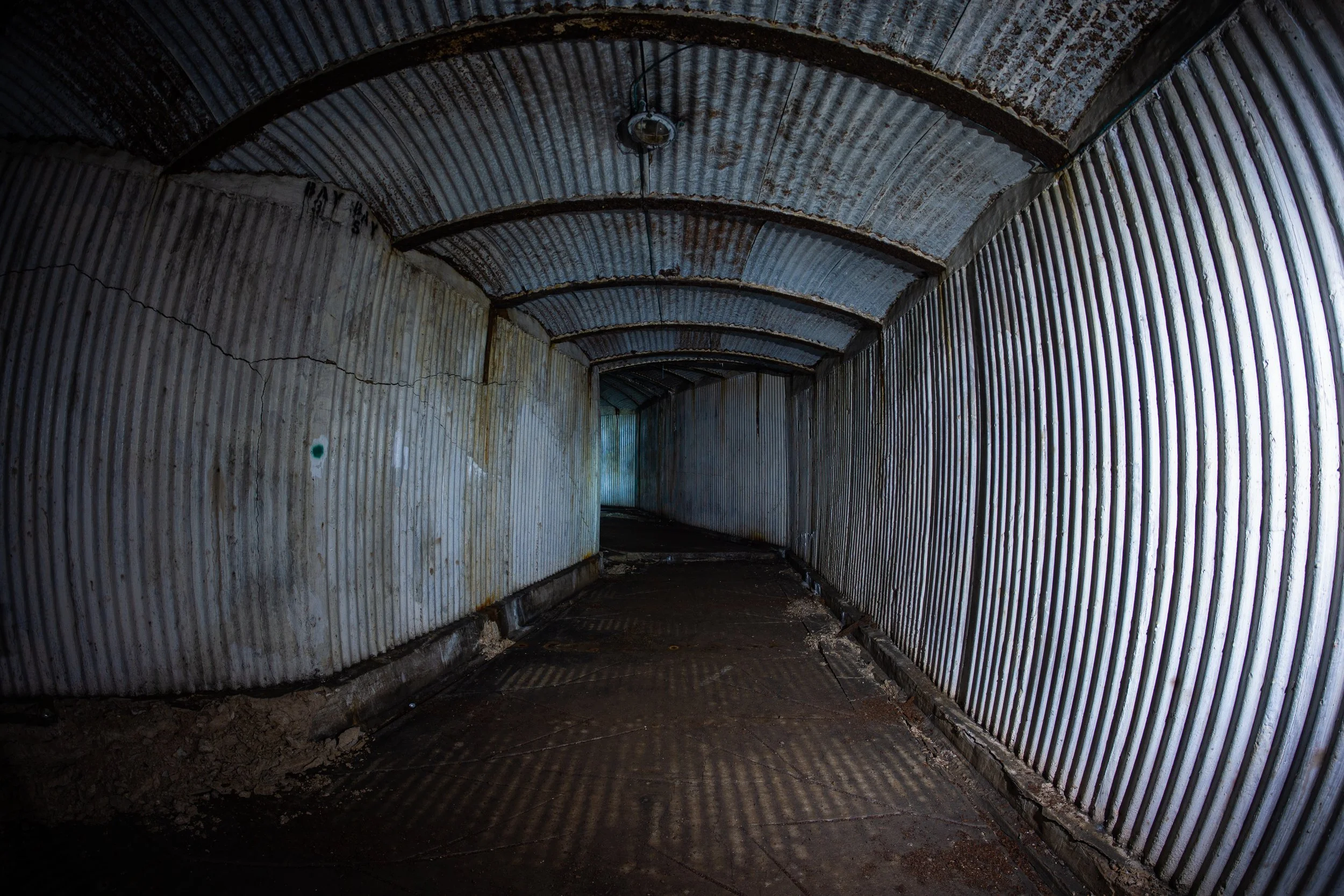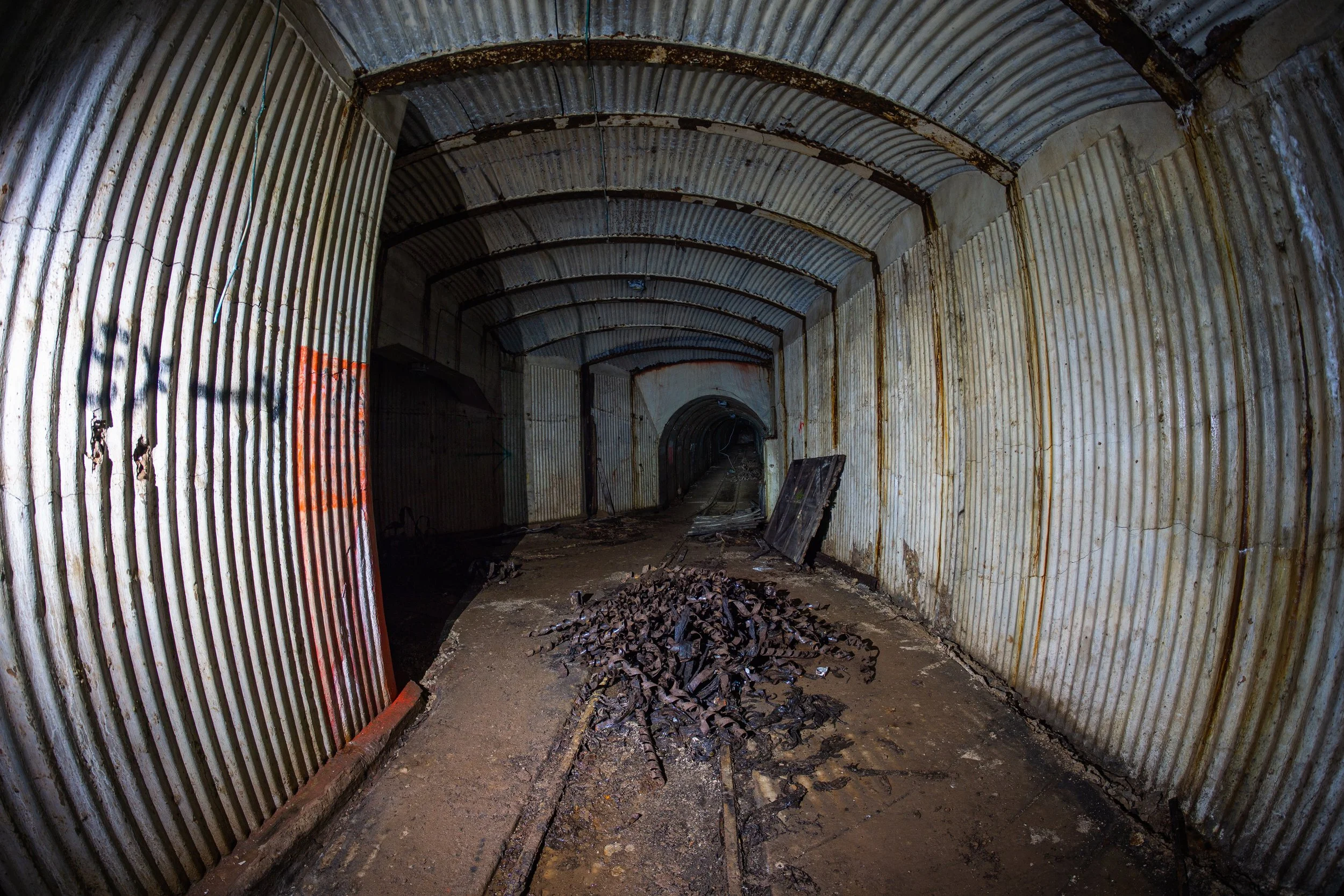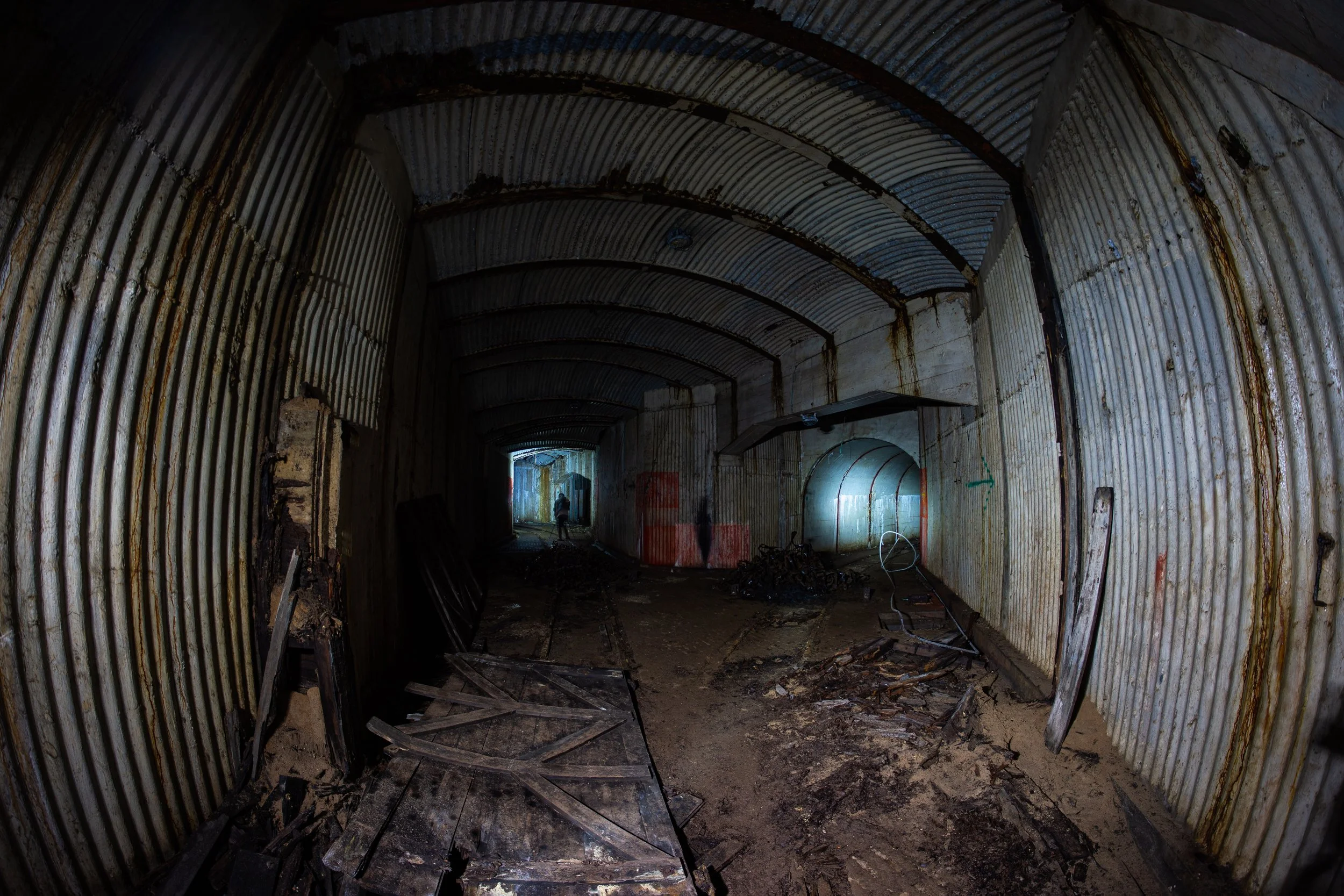RAF Fauld - Staffordshire
This place is similar to Middleton Mine in the sense that it’s been around for years, and every now and then it gets opened up and visited by a few groups before being sealed again for another decade.
I was lucky enough to slip in while it was briefly open in 2022, and it did not disappoint. I know of people who’ve been in before and ended up surrounded by armed police because it’s MOD land, and others who’ve encountered traps in the form of shotgun shells rigged to go off. With that in mind, we decided it was best to head down during the day.
The explosion site, also known as Hanbury Crater, sits right next to a working gypsum mine, which was interesting to see. After avoiding workers from the mine and surrounding farms, we eventually zig-zagged our way to a precarious-looking hole in the ground.
The first thing I noticed was the acoustics—unlike any underground site I’ve ever visited. Even the slightest sound echoed endlessly, bouncing off the walls. At the entrance, turning left, there was a bricked-up wall with a few bricks missing. Through the small gap, a large pile of rubble could be seen. I’ve since been told that if someone was willing to dig through the supposed 12 feet of debris, they’d break into the old munitions stores—something that, from comparing maps to the fuse store layout, would really be worth a look.
Turning right, after a short walk, you come to a major unstable collapse, which has previously trapped explorers and forced them to dig their way back out. It was something I definitely wanted to avoid, so I took care crawling through the small opening.
We spent a few hours exploring, and it was every bit as good as I’d hoped. In a couple of places, you can still see where the ground was forced upwards by the explosion all those years ago. I was a little disappointed that there wasn’t an intact “Exit” sign in sight—presumably, those now sit on someone’s shelf somewhere—but that’s how it goes.
The history of this site is fascinating: how a chain of small errors led to one of the biggest accidental explosions in Europe. I recently picked up a great book, The Fauld Disaster, which goes into the event in detail and also covers similar sites such as Llanberis and Harpur Hill. Definitely worth a read.
History
“The site of RAF Fauld, near Hanbury in Staffordshire, began life as a secret underground munitions storage depot during the Second World War, chosen for its extensive network of gypsum mines which provided both concealment and natural blast protection. Opened in 1937, the depot became one of the largest underground ammunition stores in Europe, holding tens of thousands of tonnes of bombs, shells, and explosives. On 27 November 1944, a massive accident occurred when around 3,500 tonnes of ordnance detonated in what is still considered one of the largest non-nuclear explosions in history. The blast created a crater nearly a mile across, flattened the surrounding countryside, and killed at least 70 people, though the true toll is believed to be higher as many victims were never recovered. The explosion also devastated nearby farms, a plaster works, and flooded surrounding valleys when it breached the banks of the River Dove. Despite the scale of the disaster, the site continued to be used for ammunition storage into the post-war years, though large areas remained unstable and dangerous. Today the land is still owned by the Ministry of Defence and remains restricted due to the presence of buried unexploded ordnance, standing as both a memorial to those who died and a stark reminder of the hidden risks of wartime industry”.
